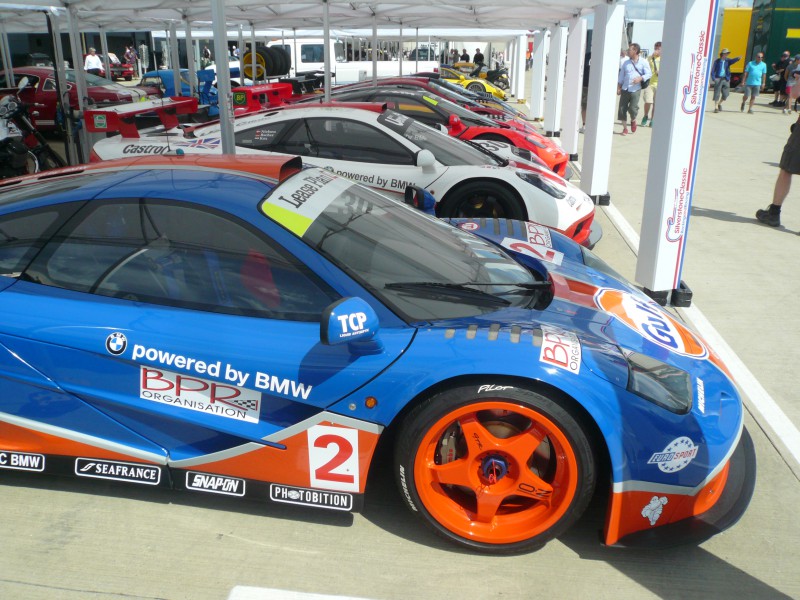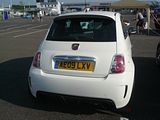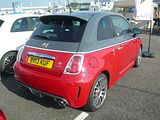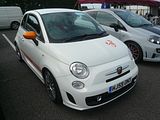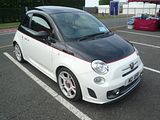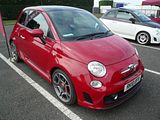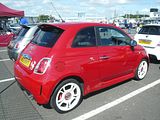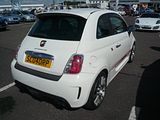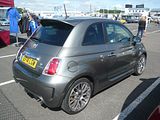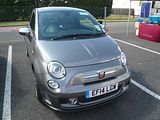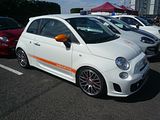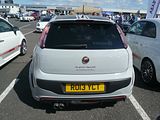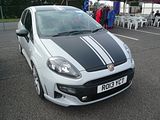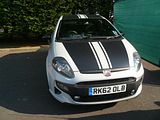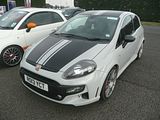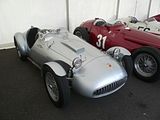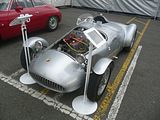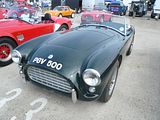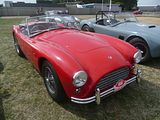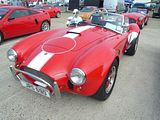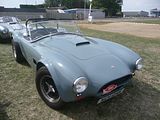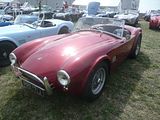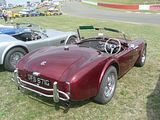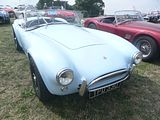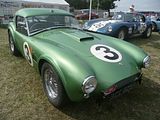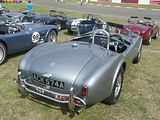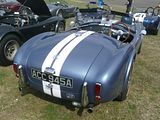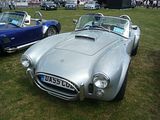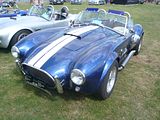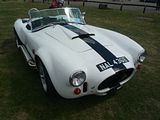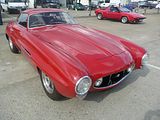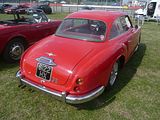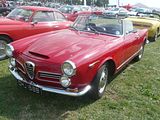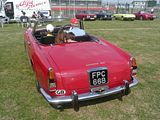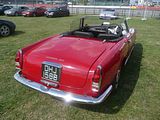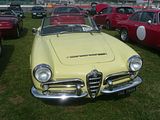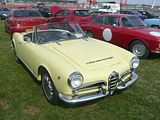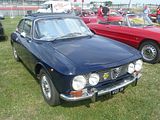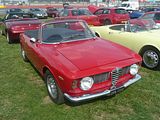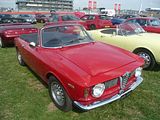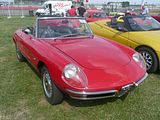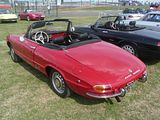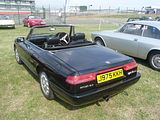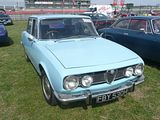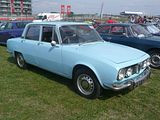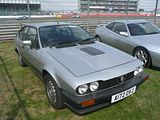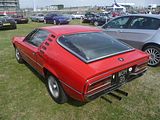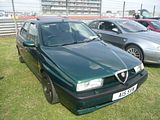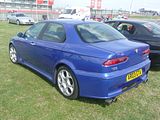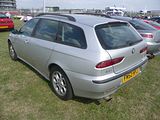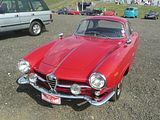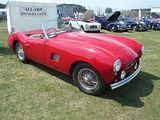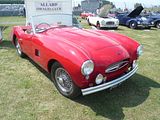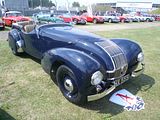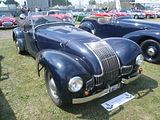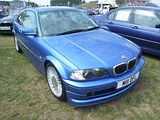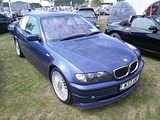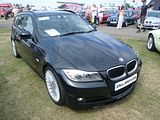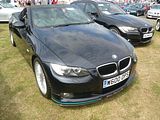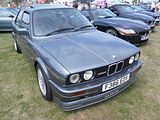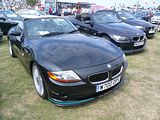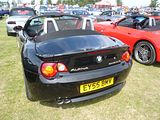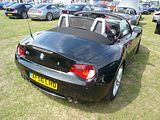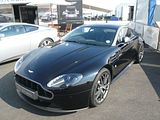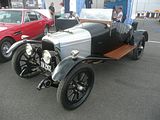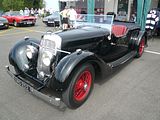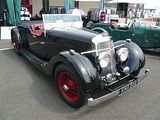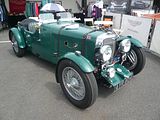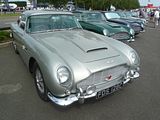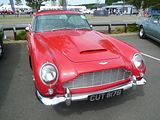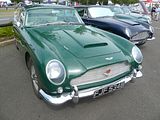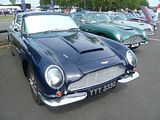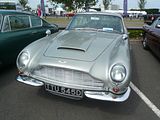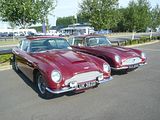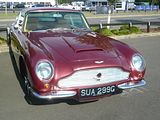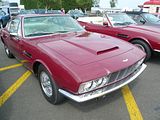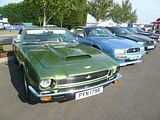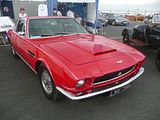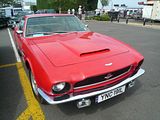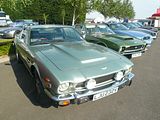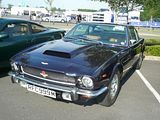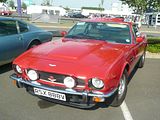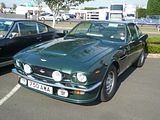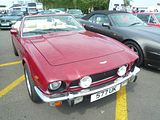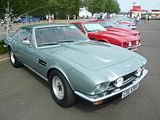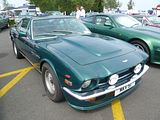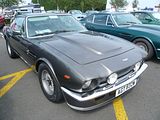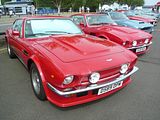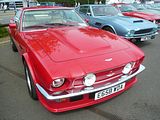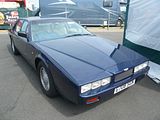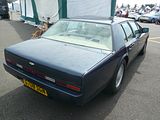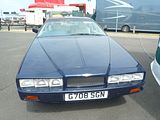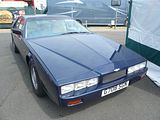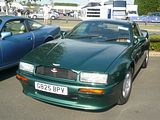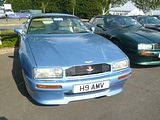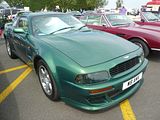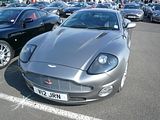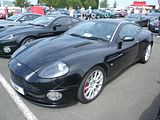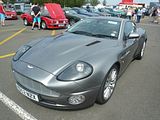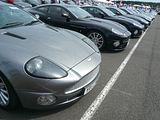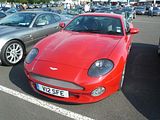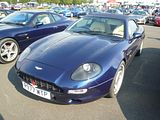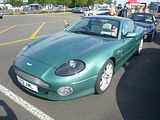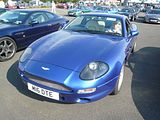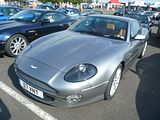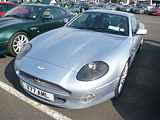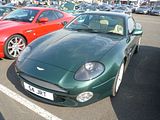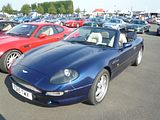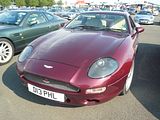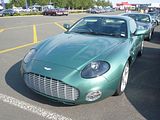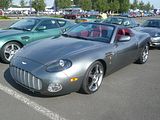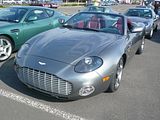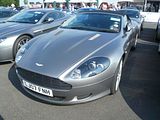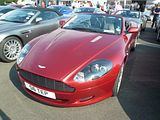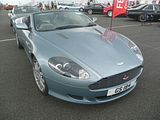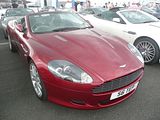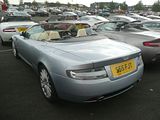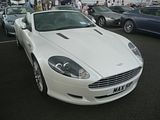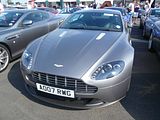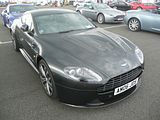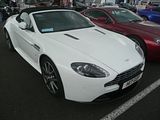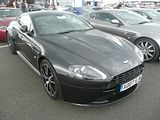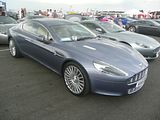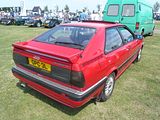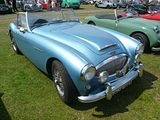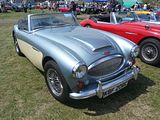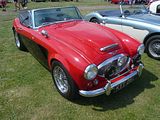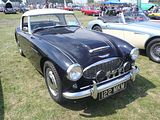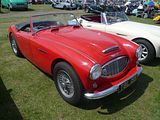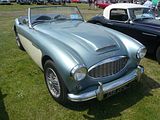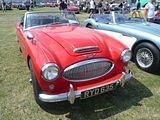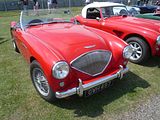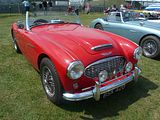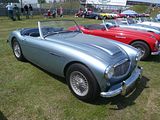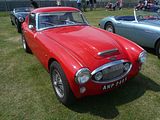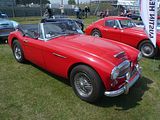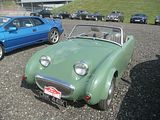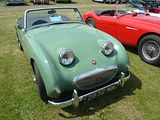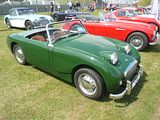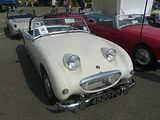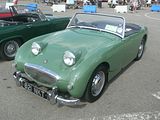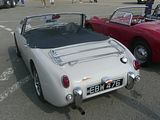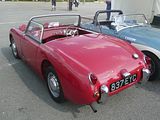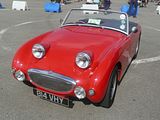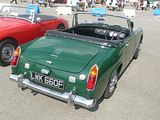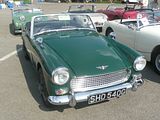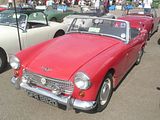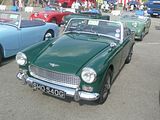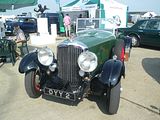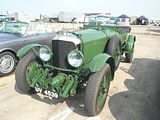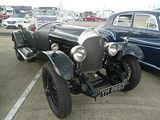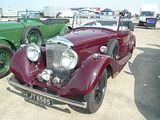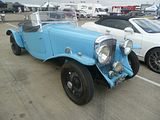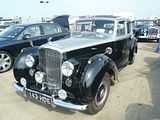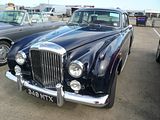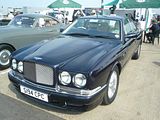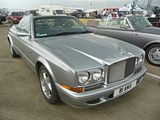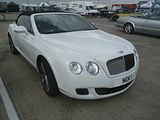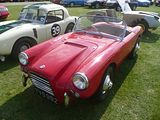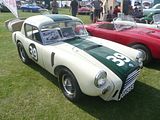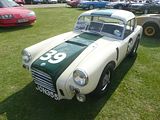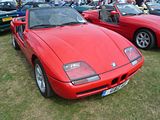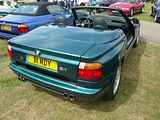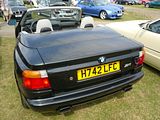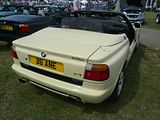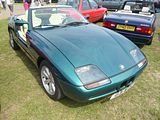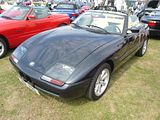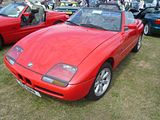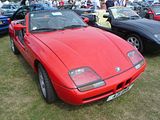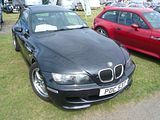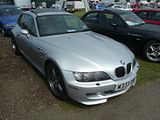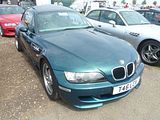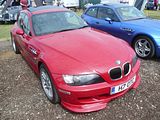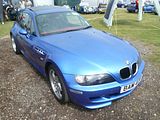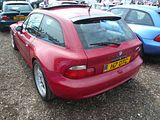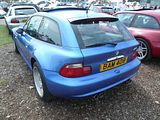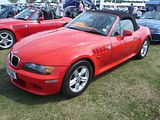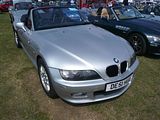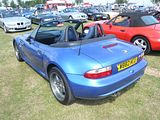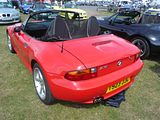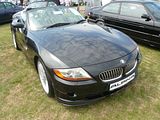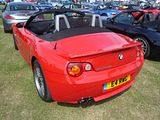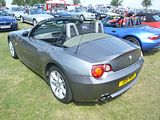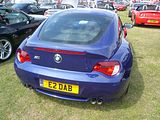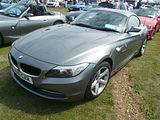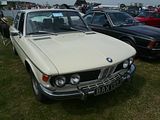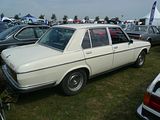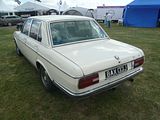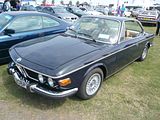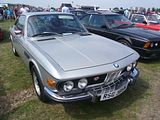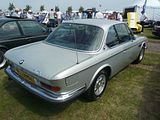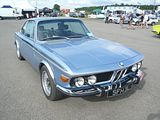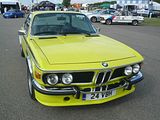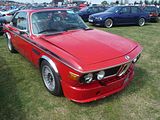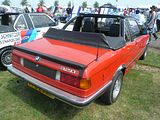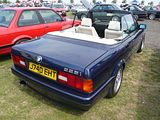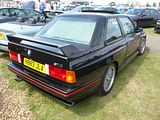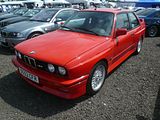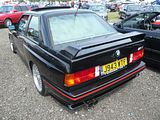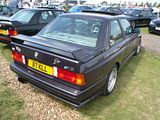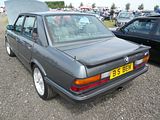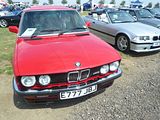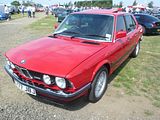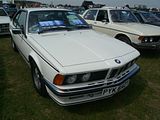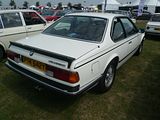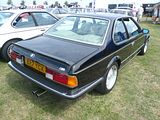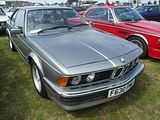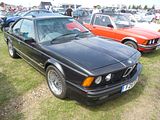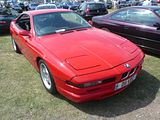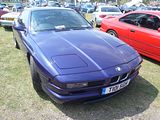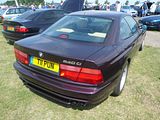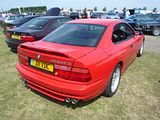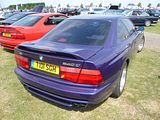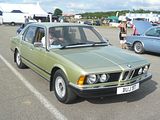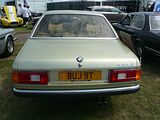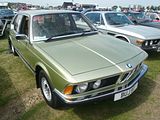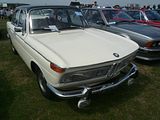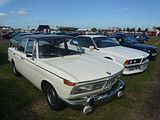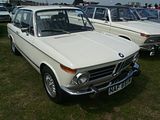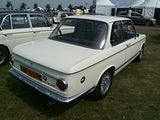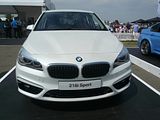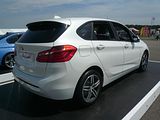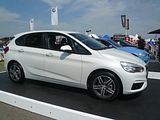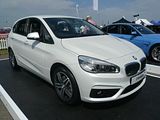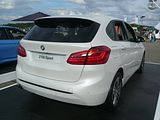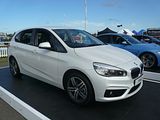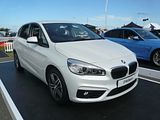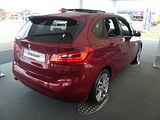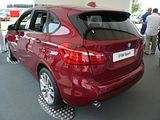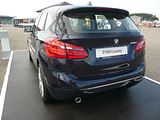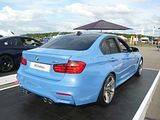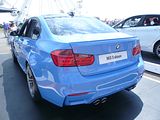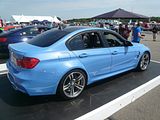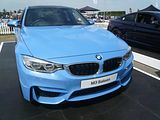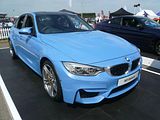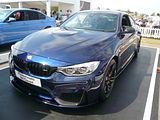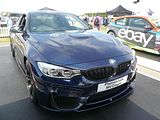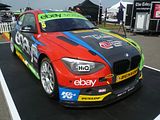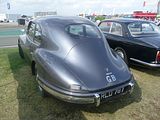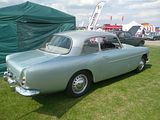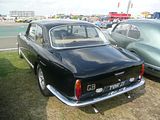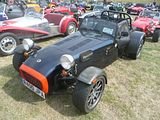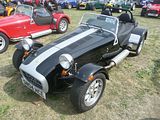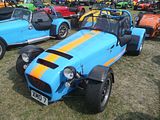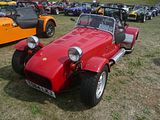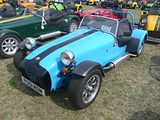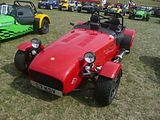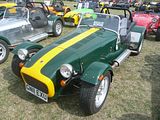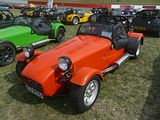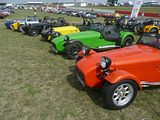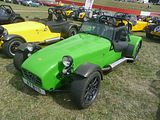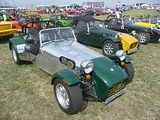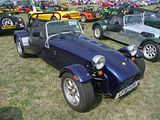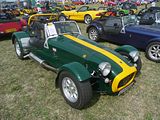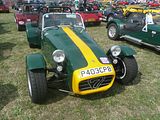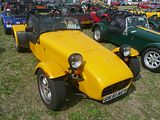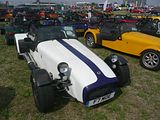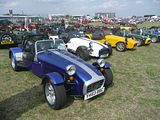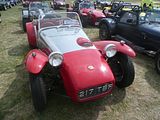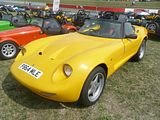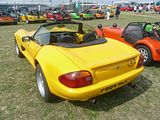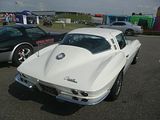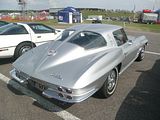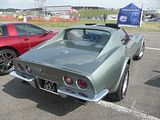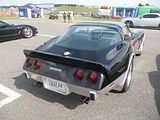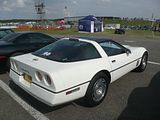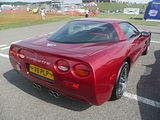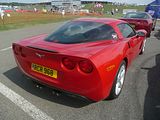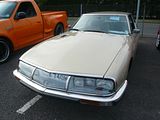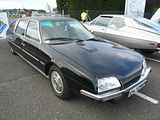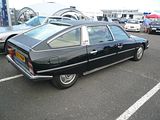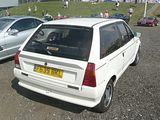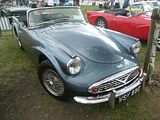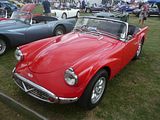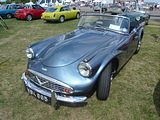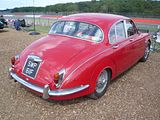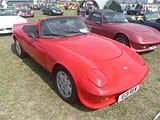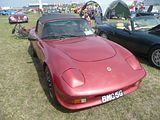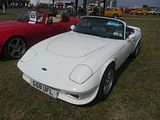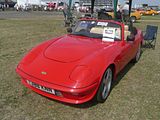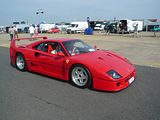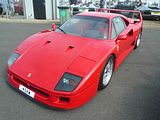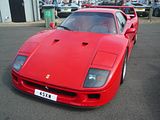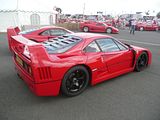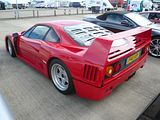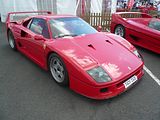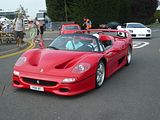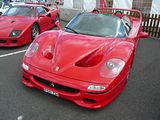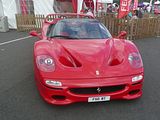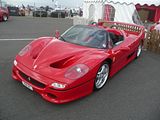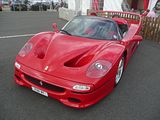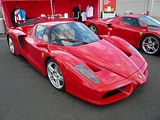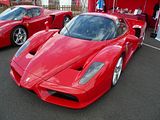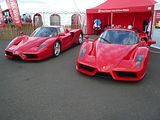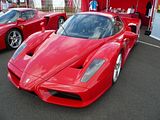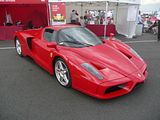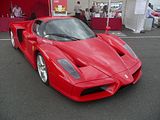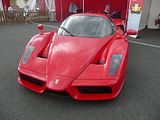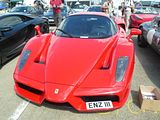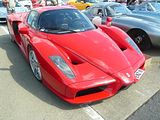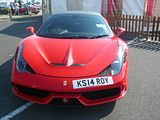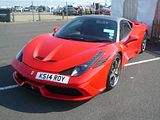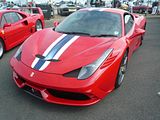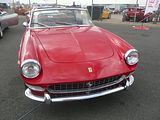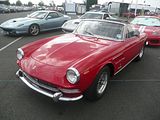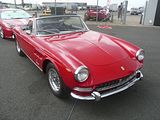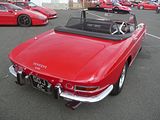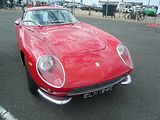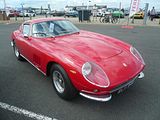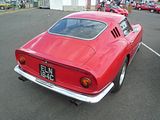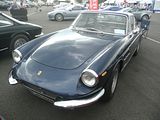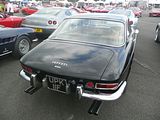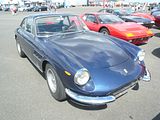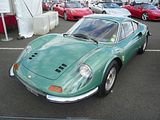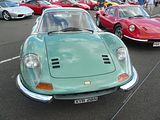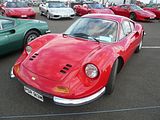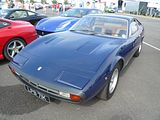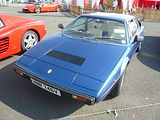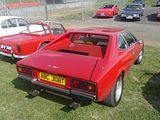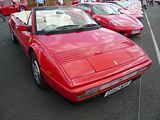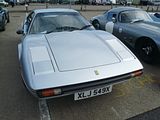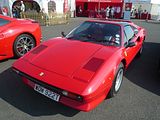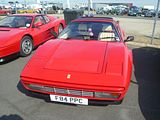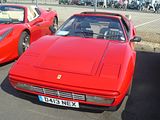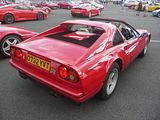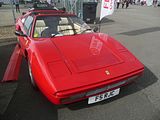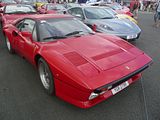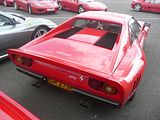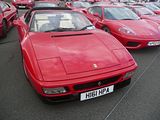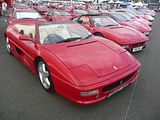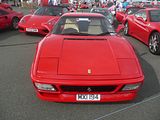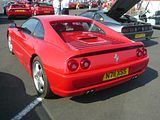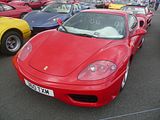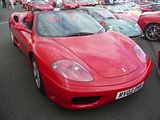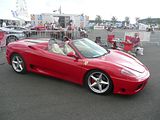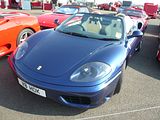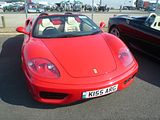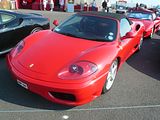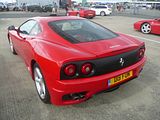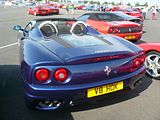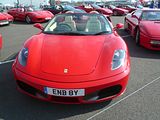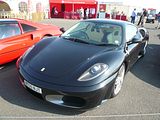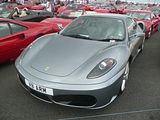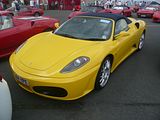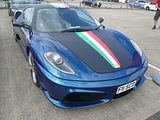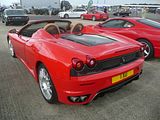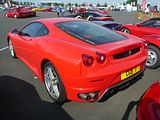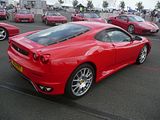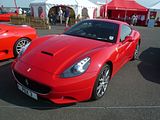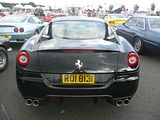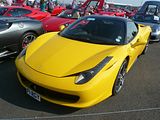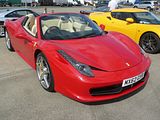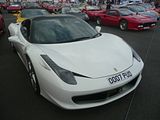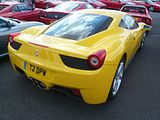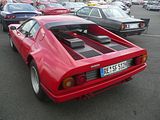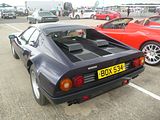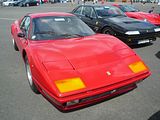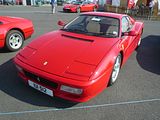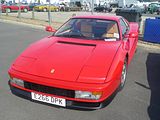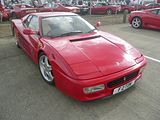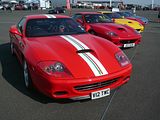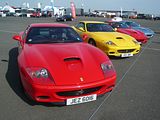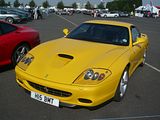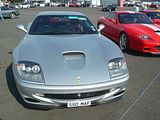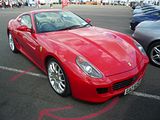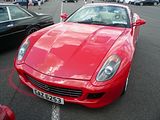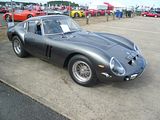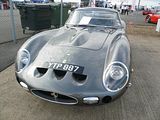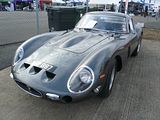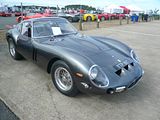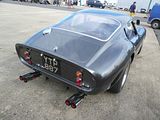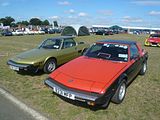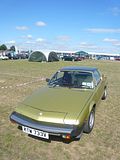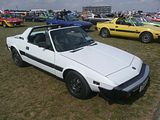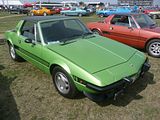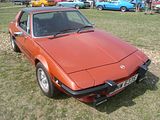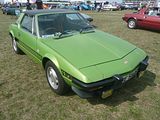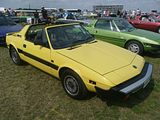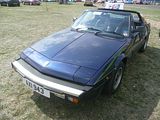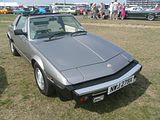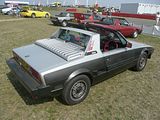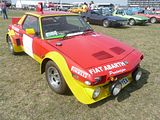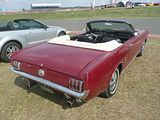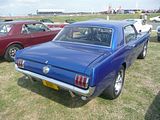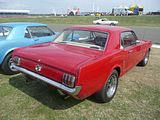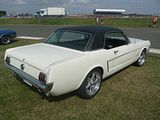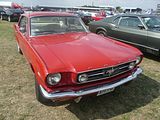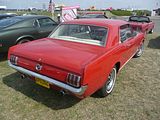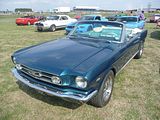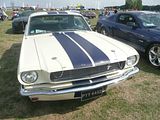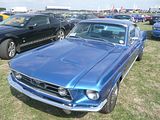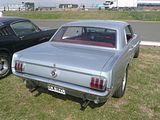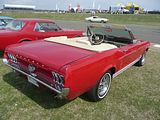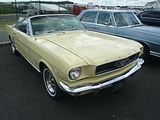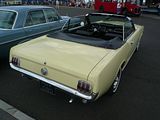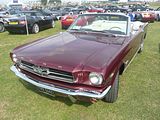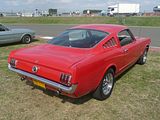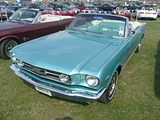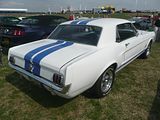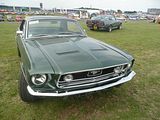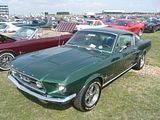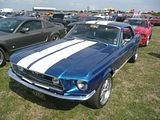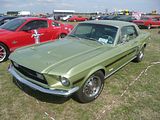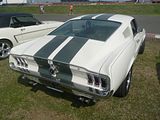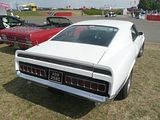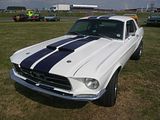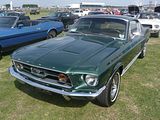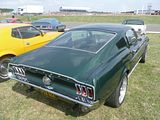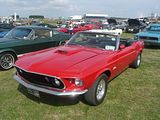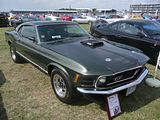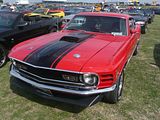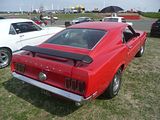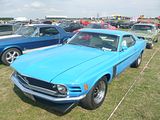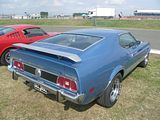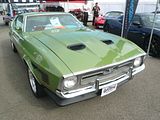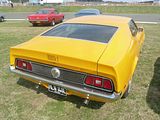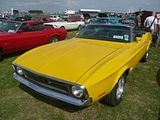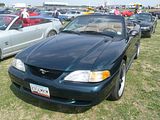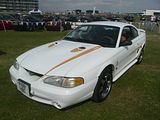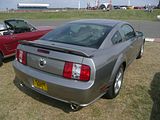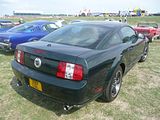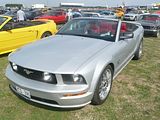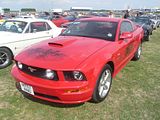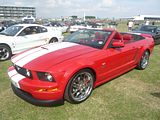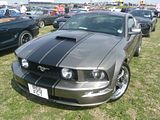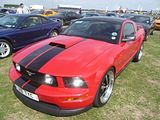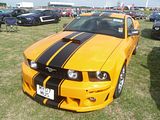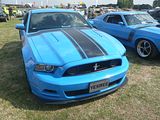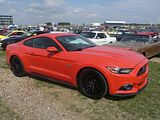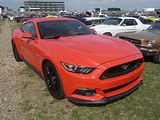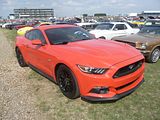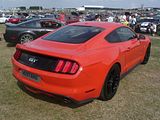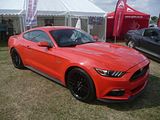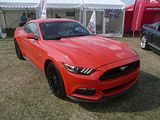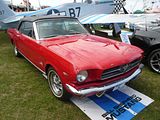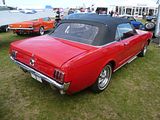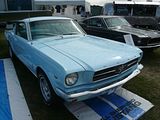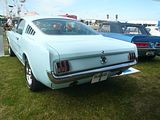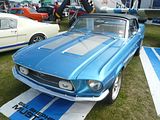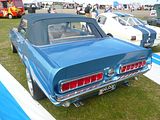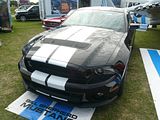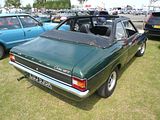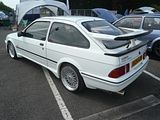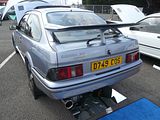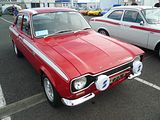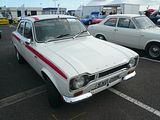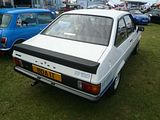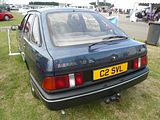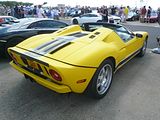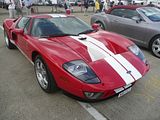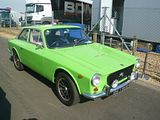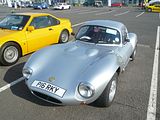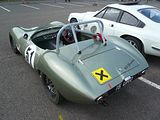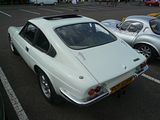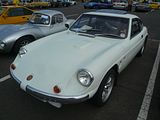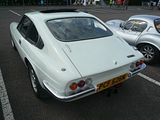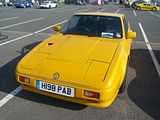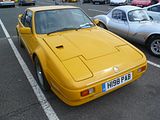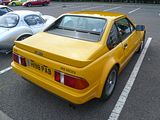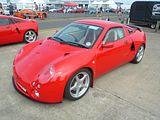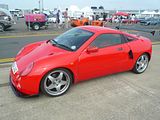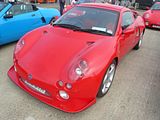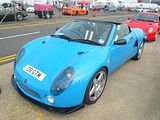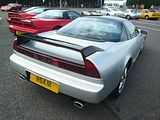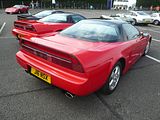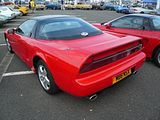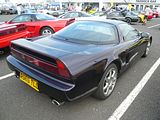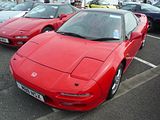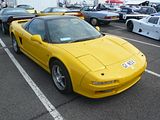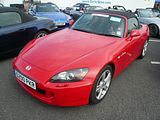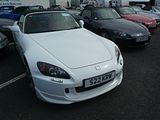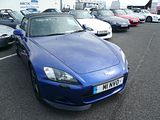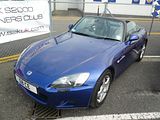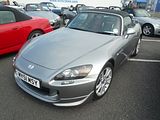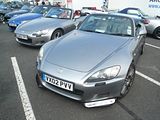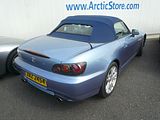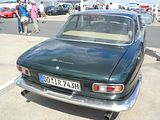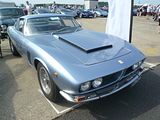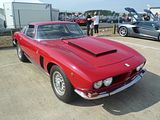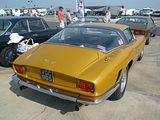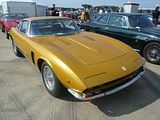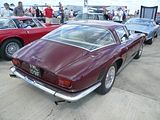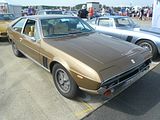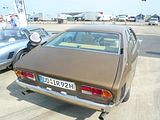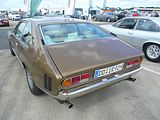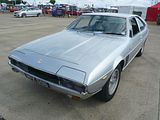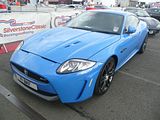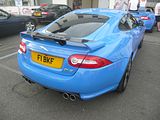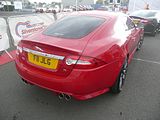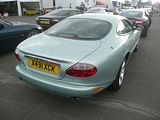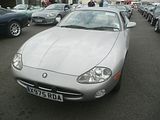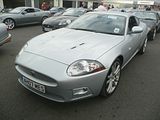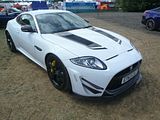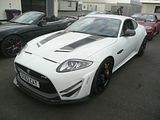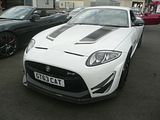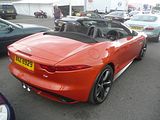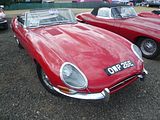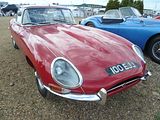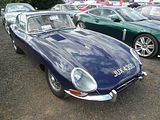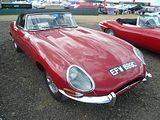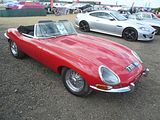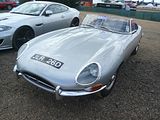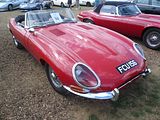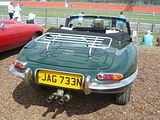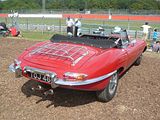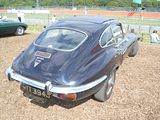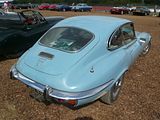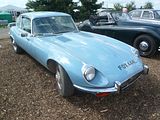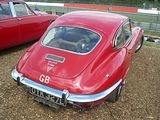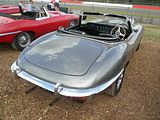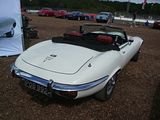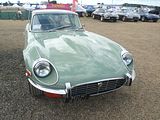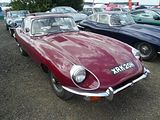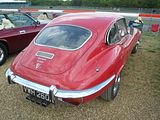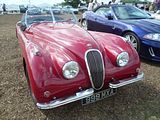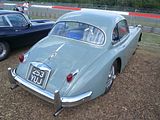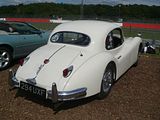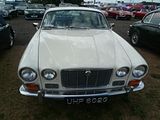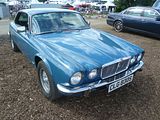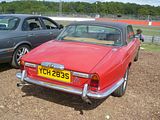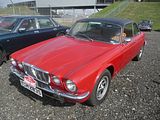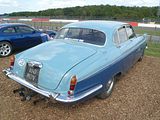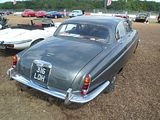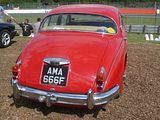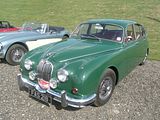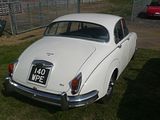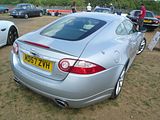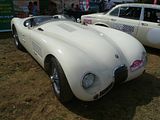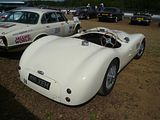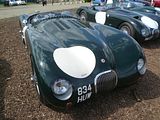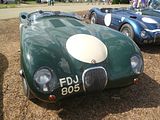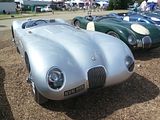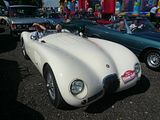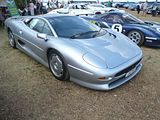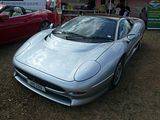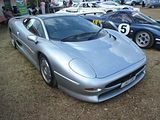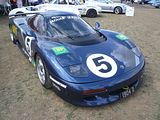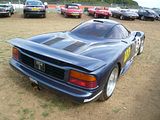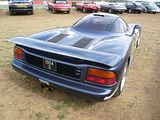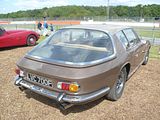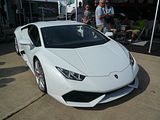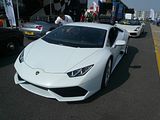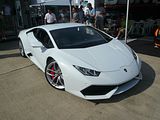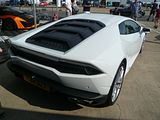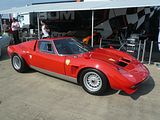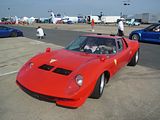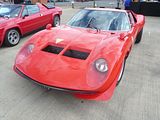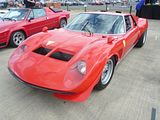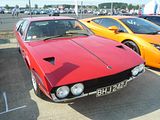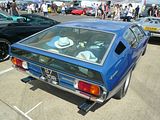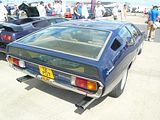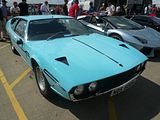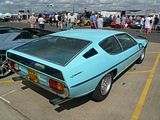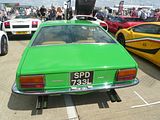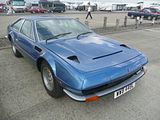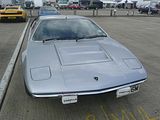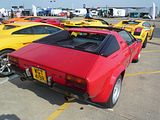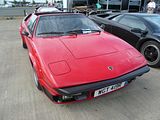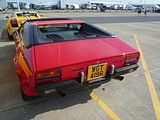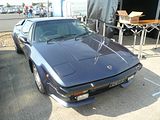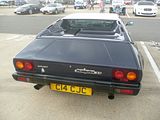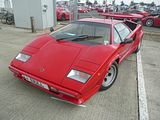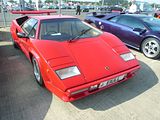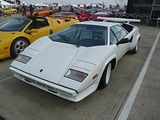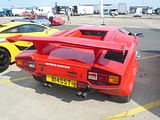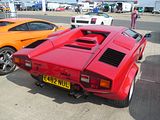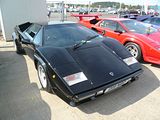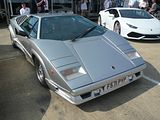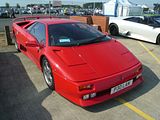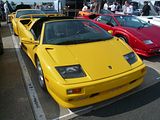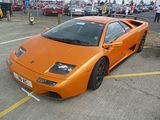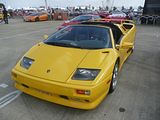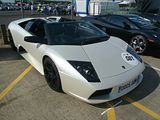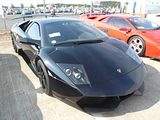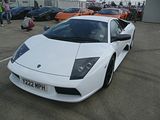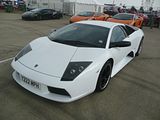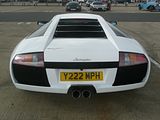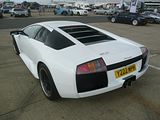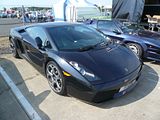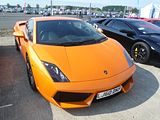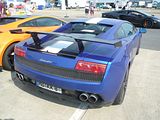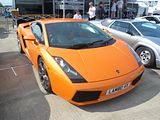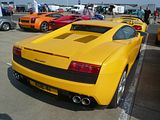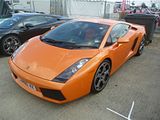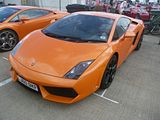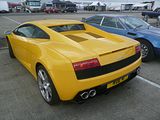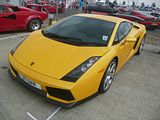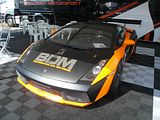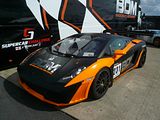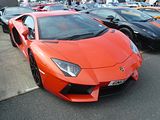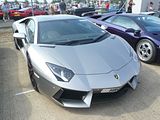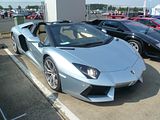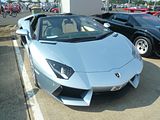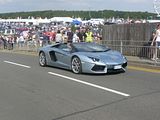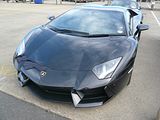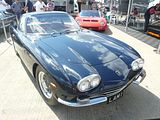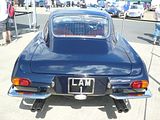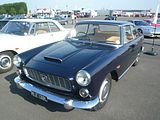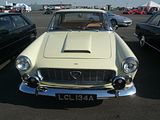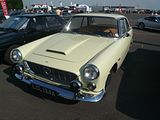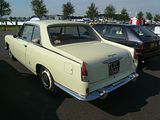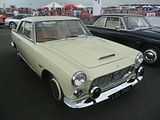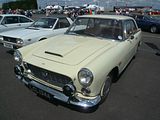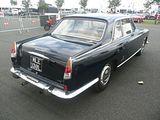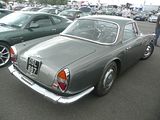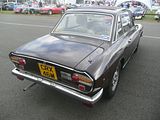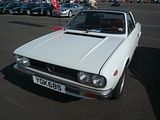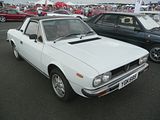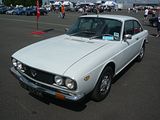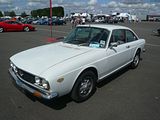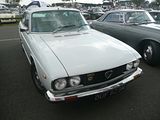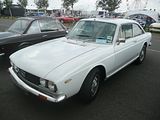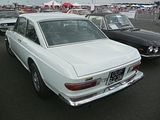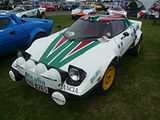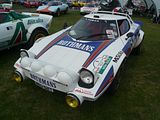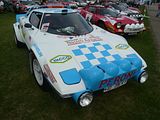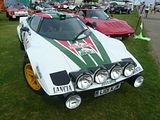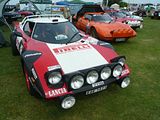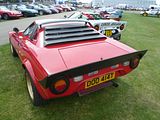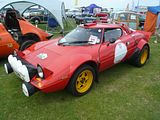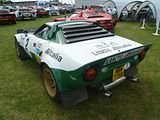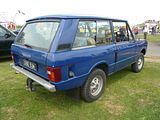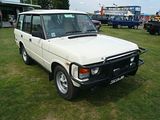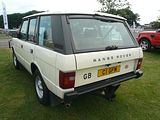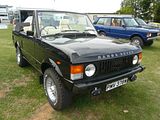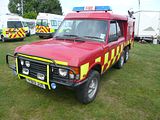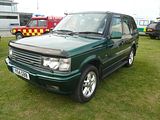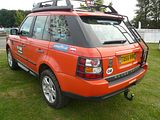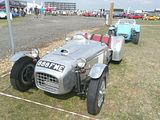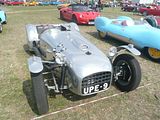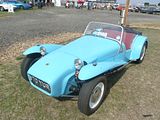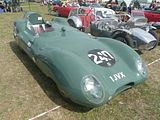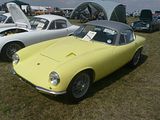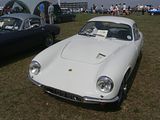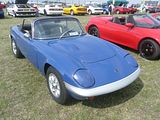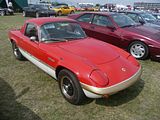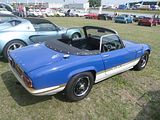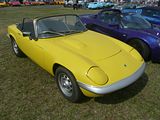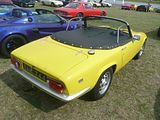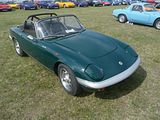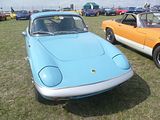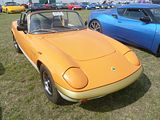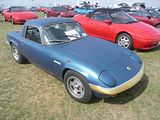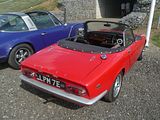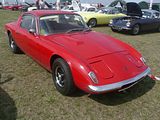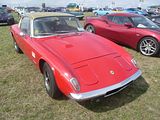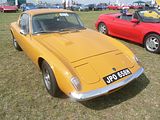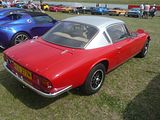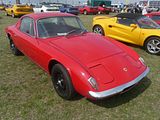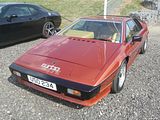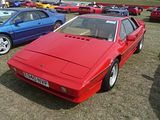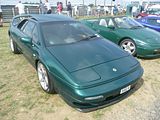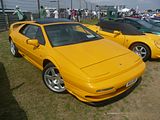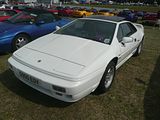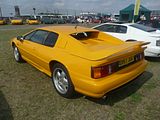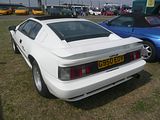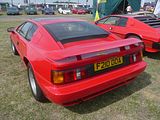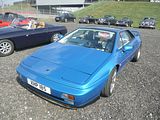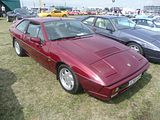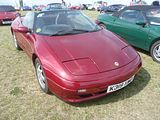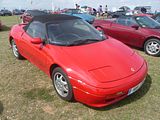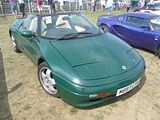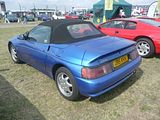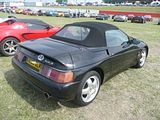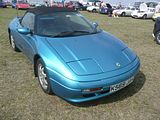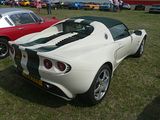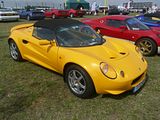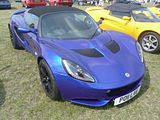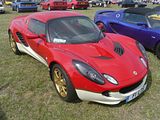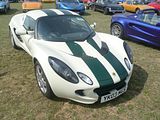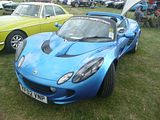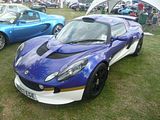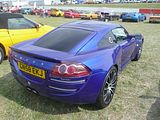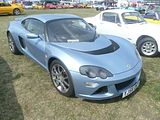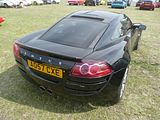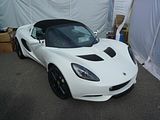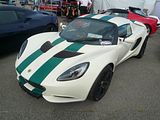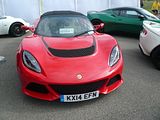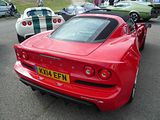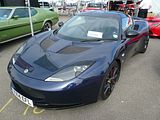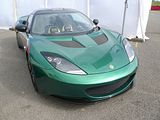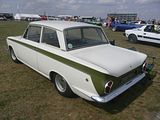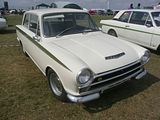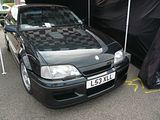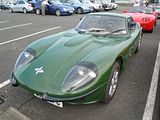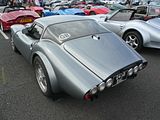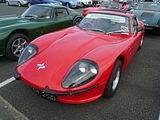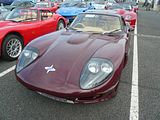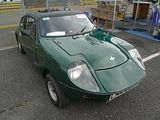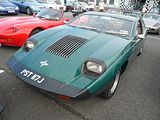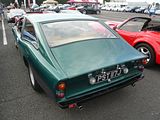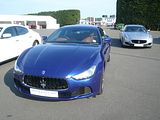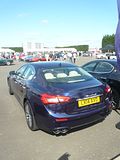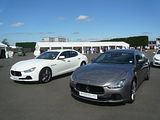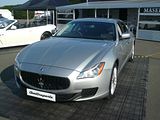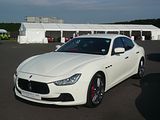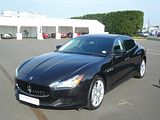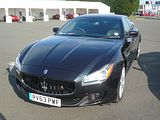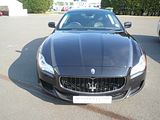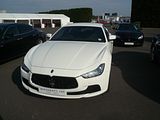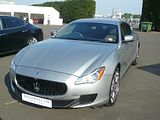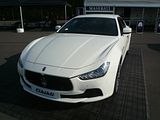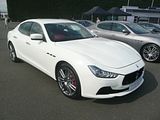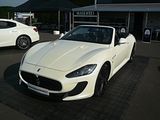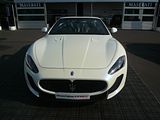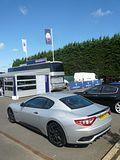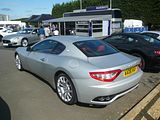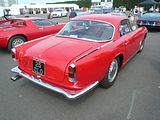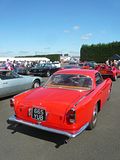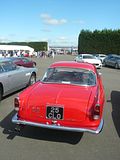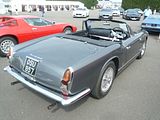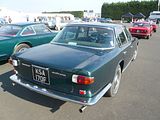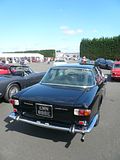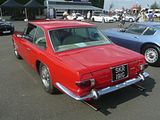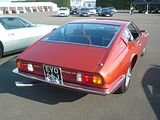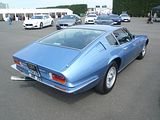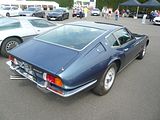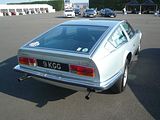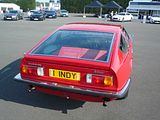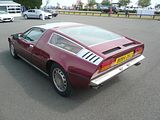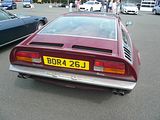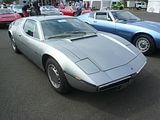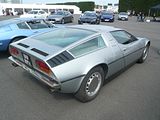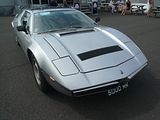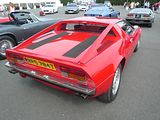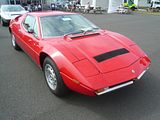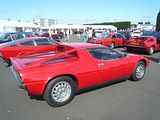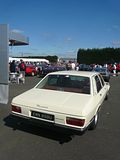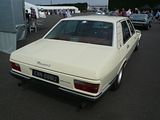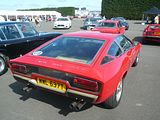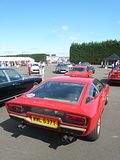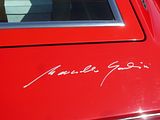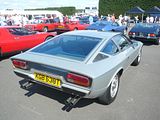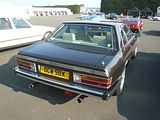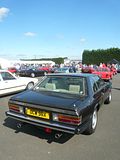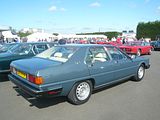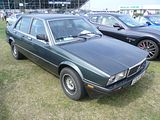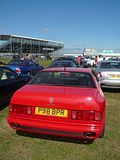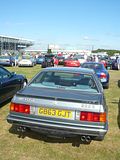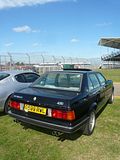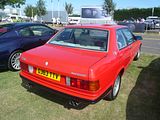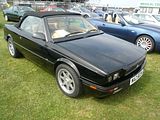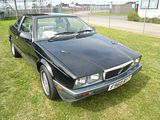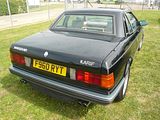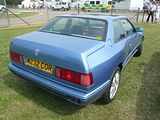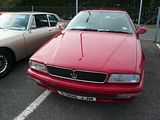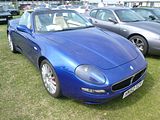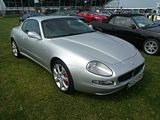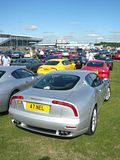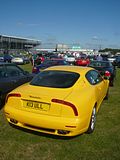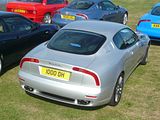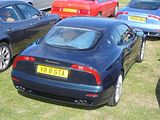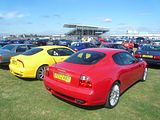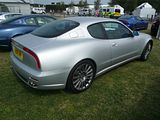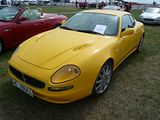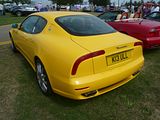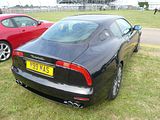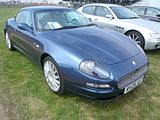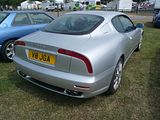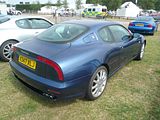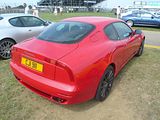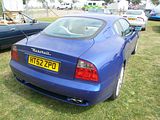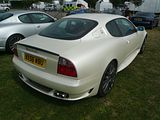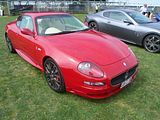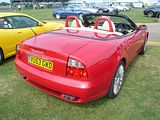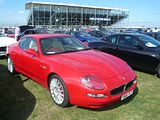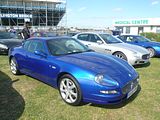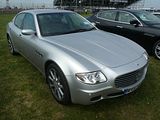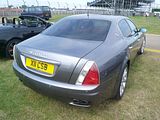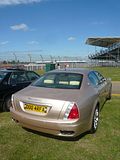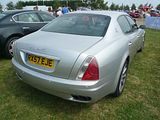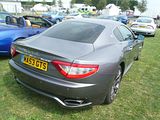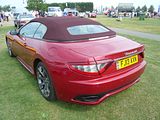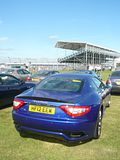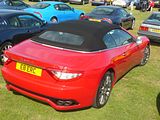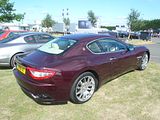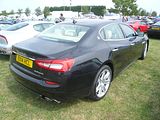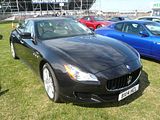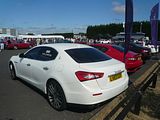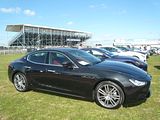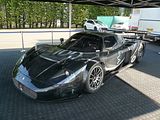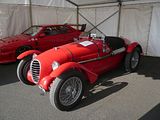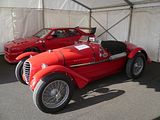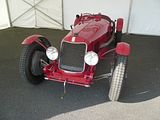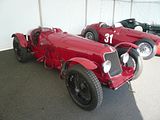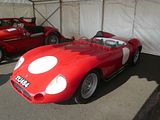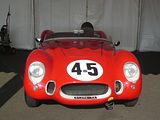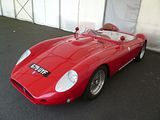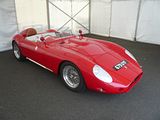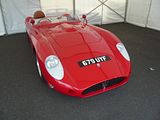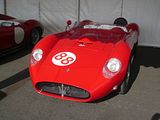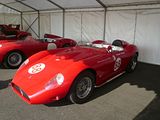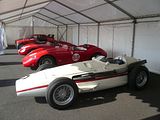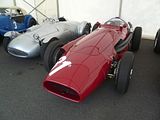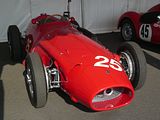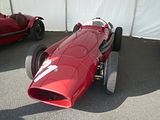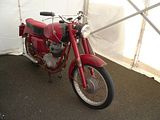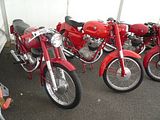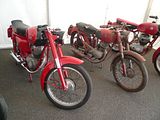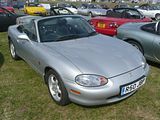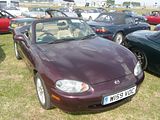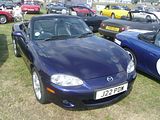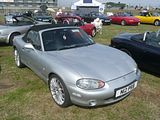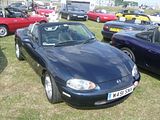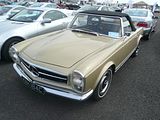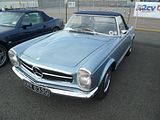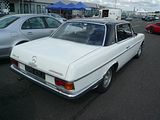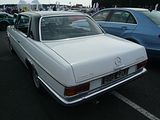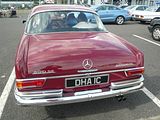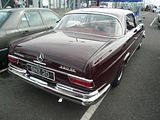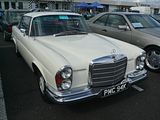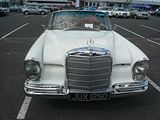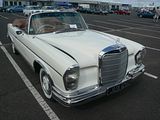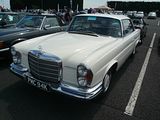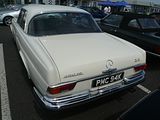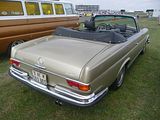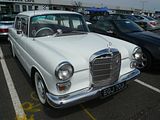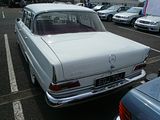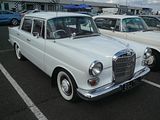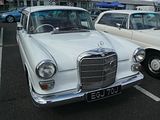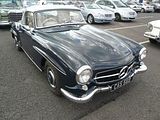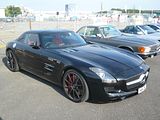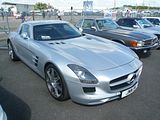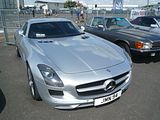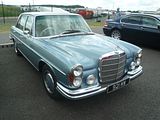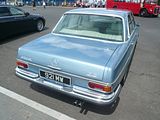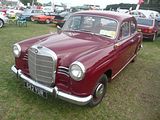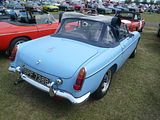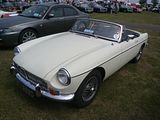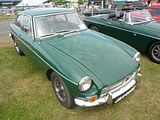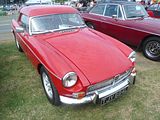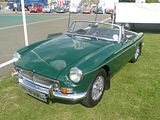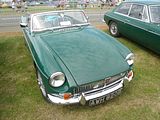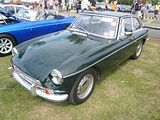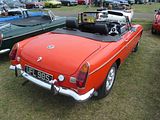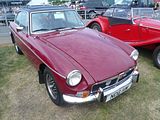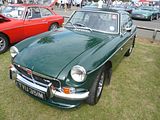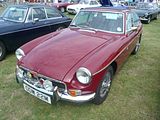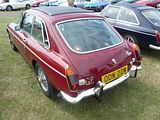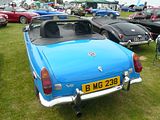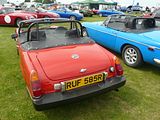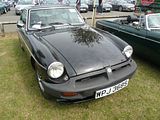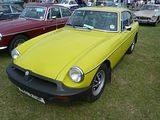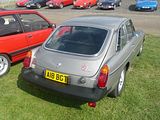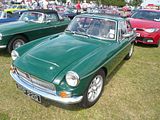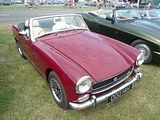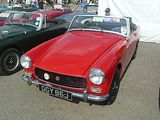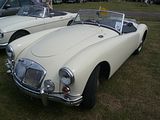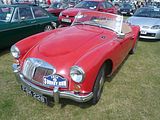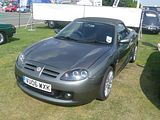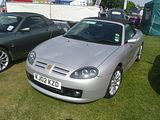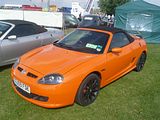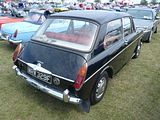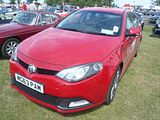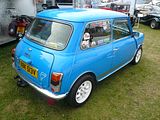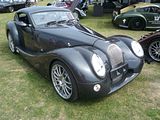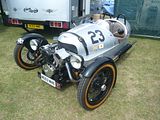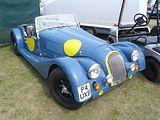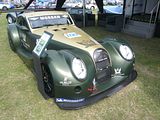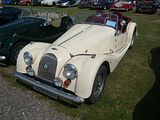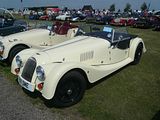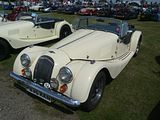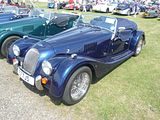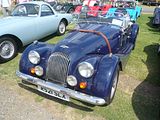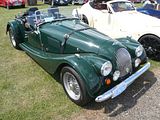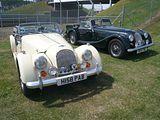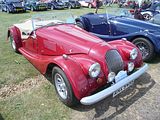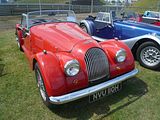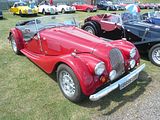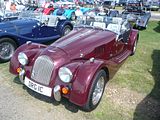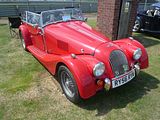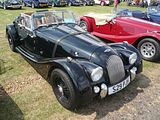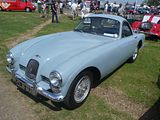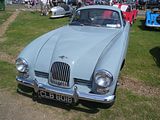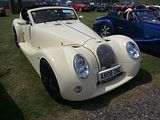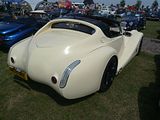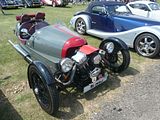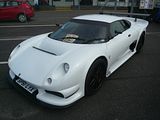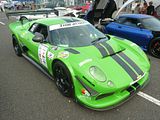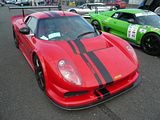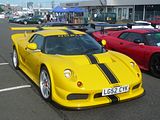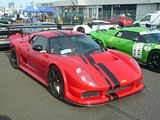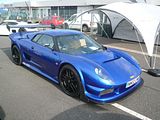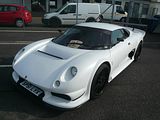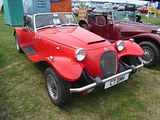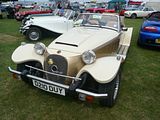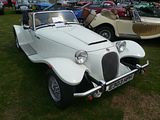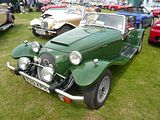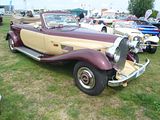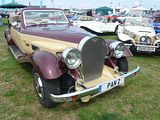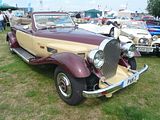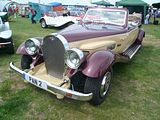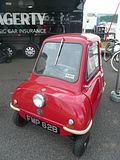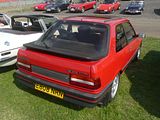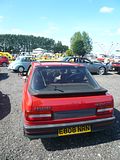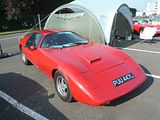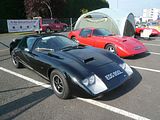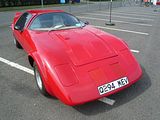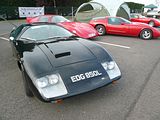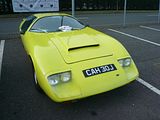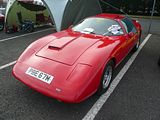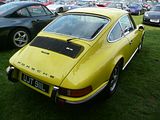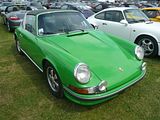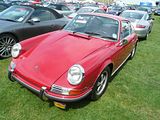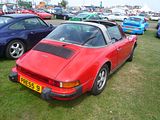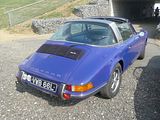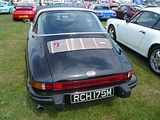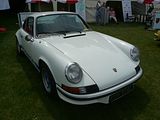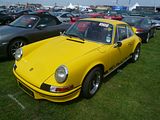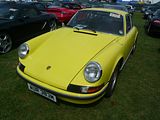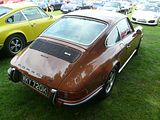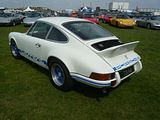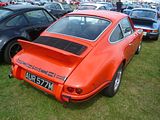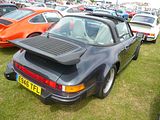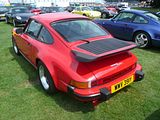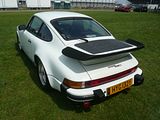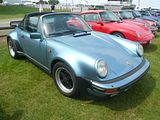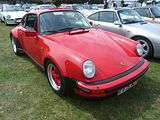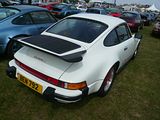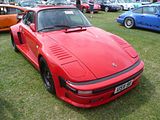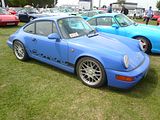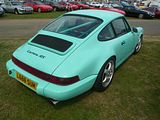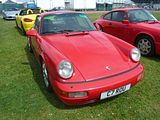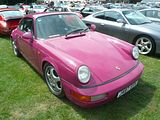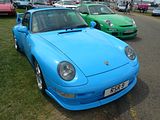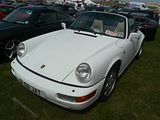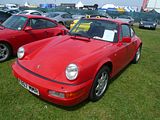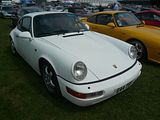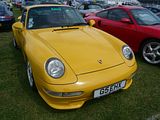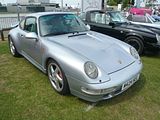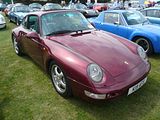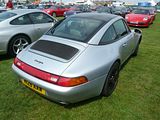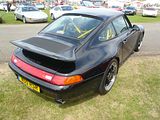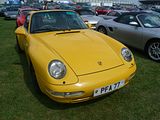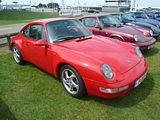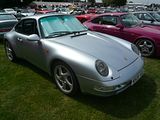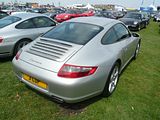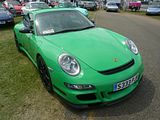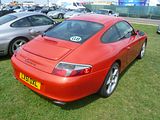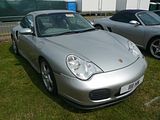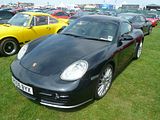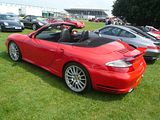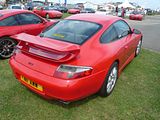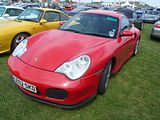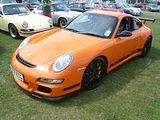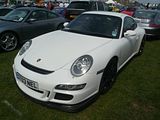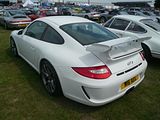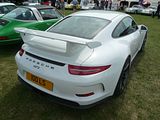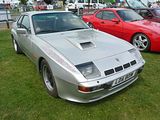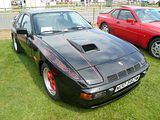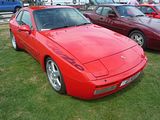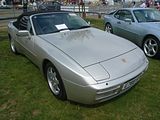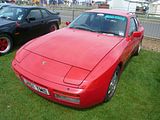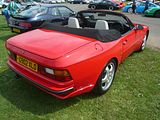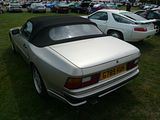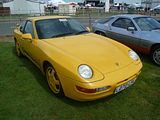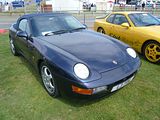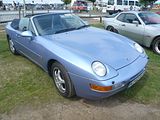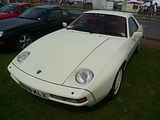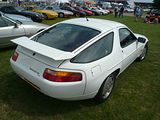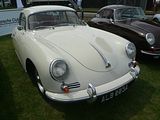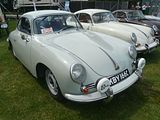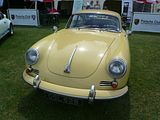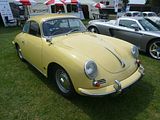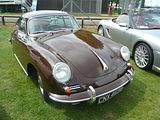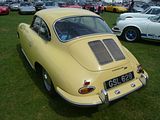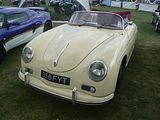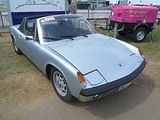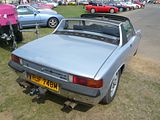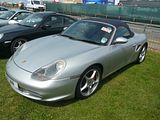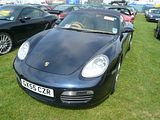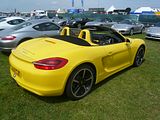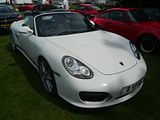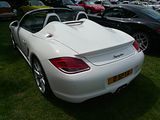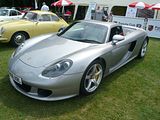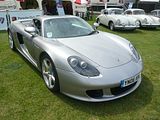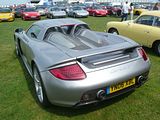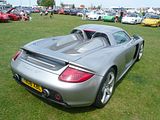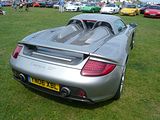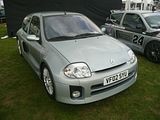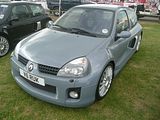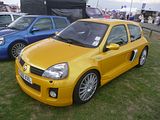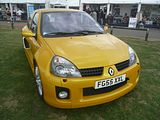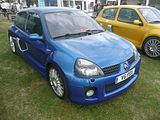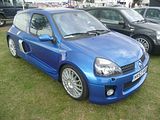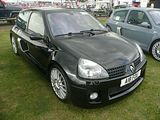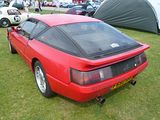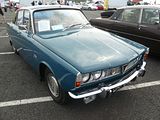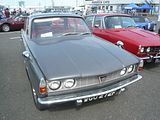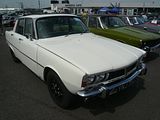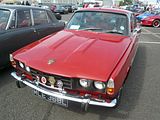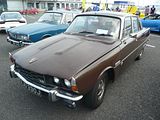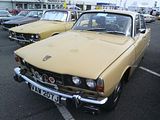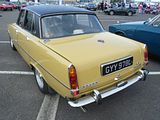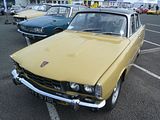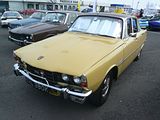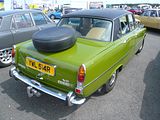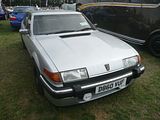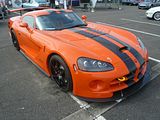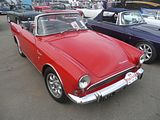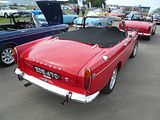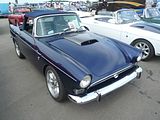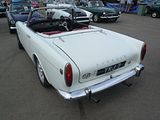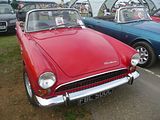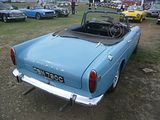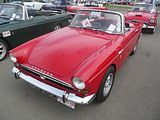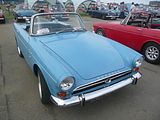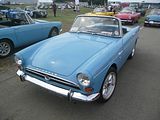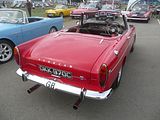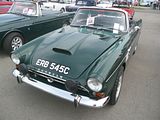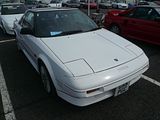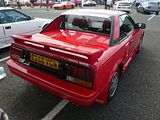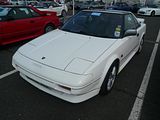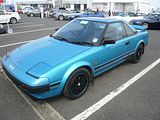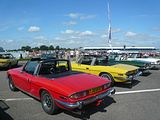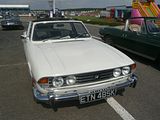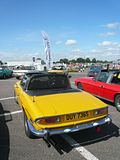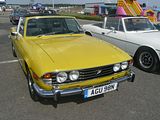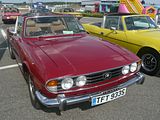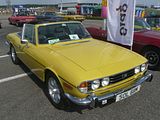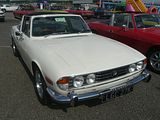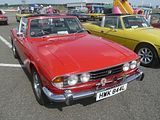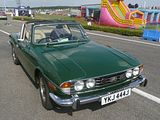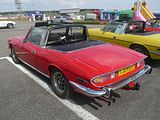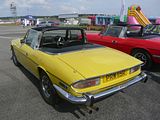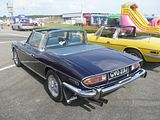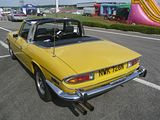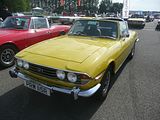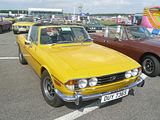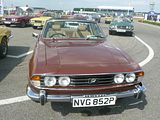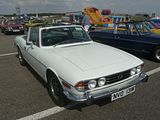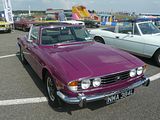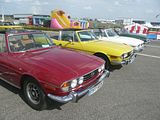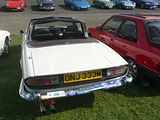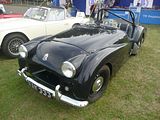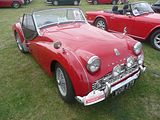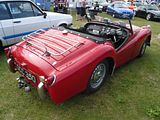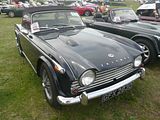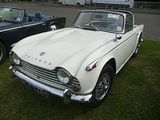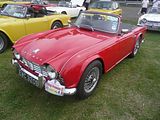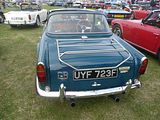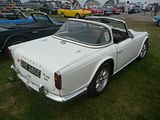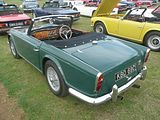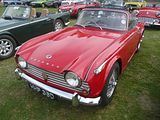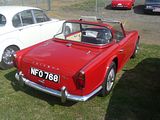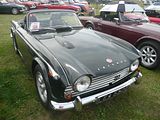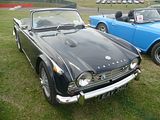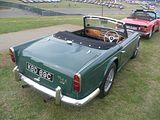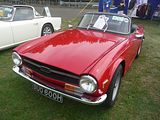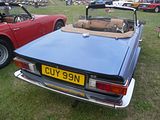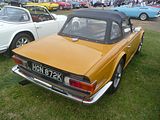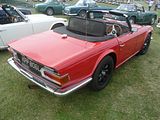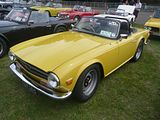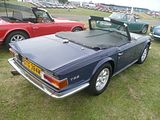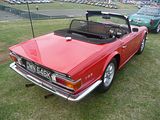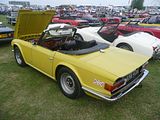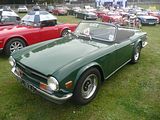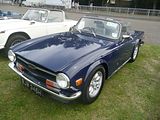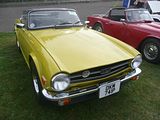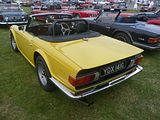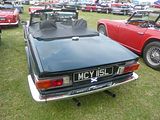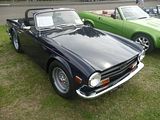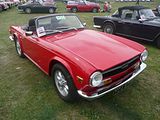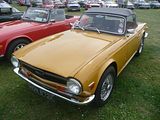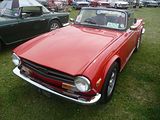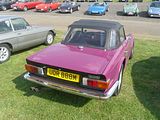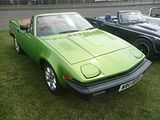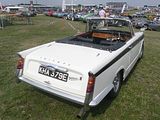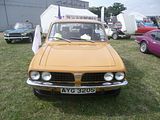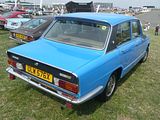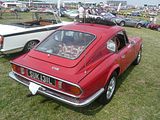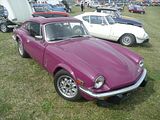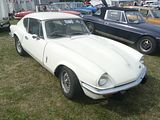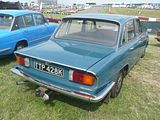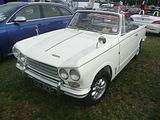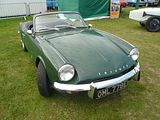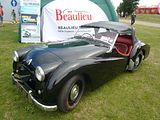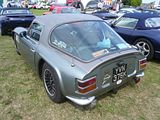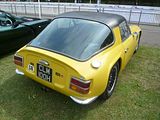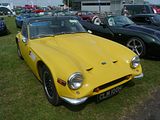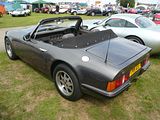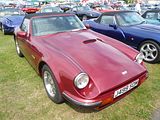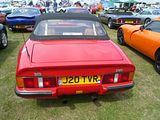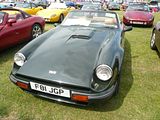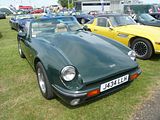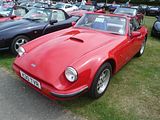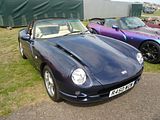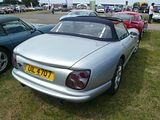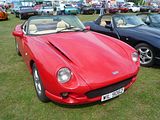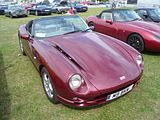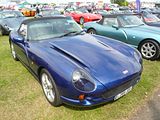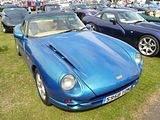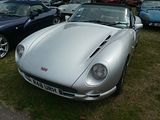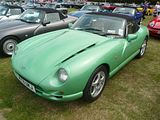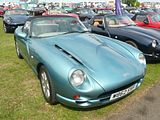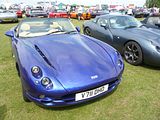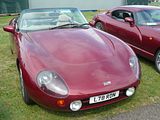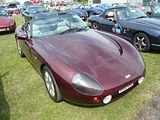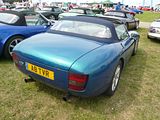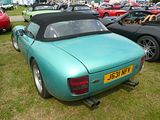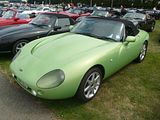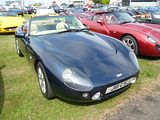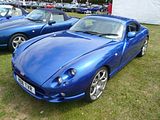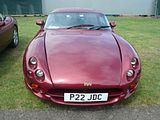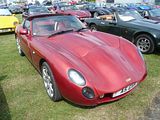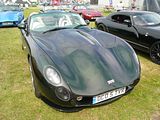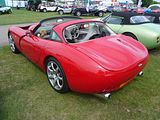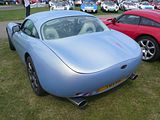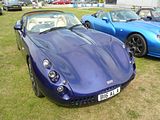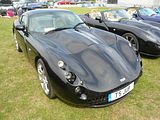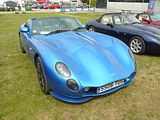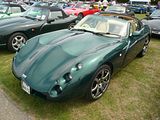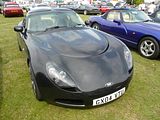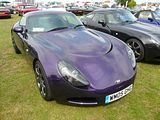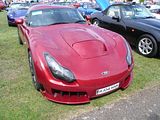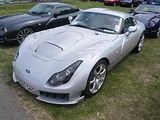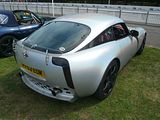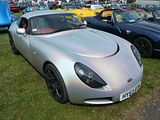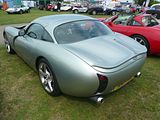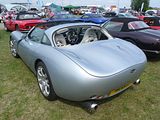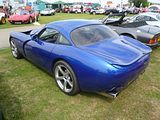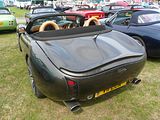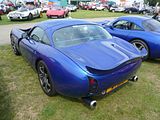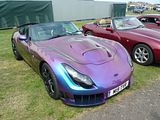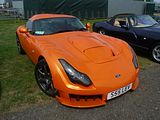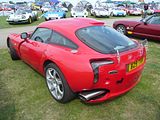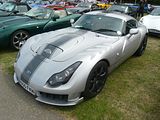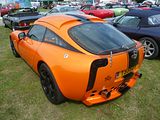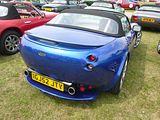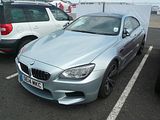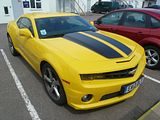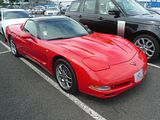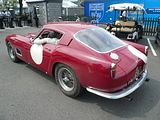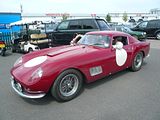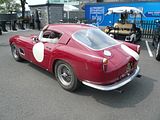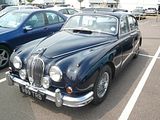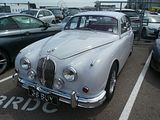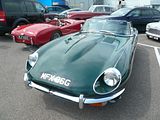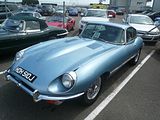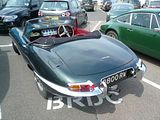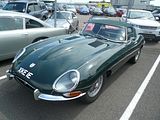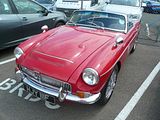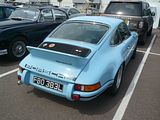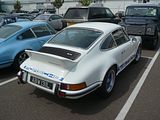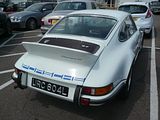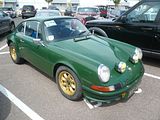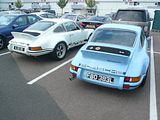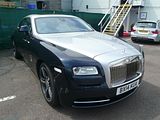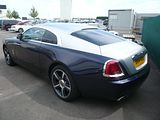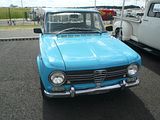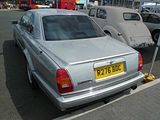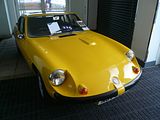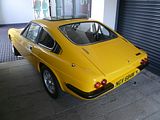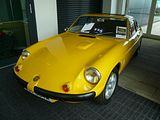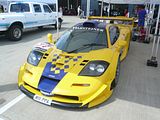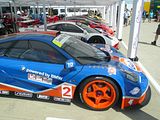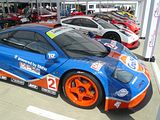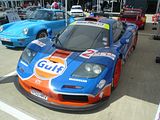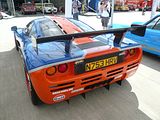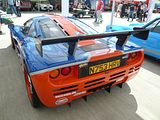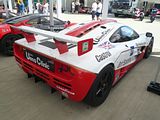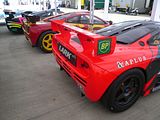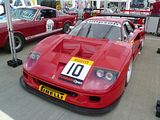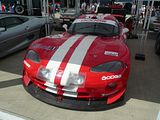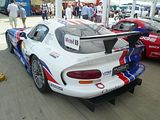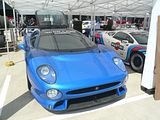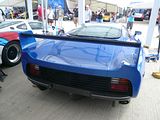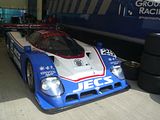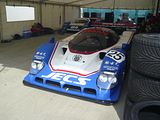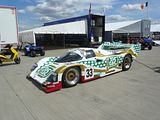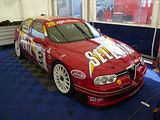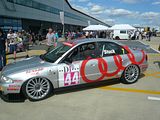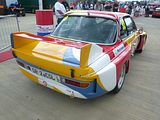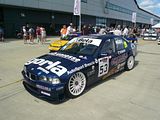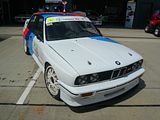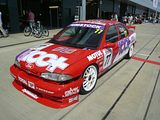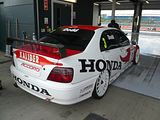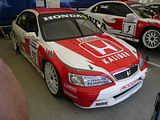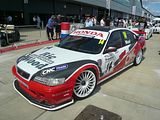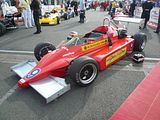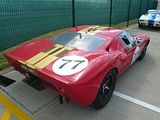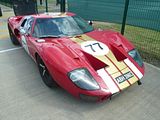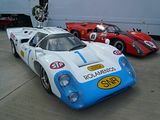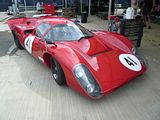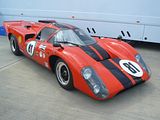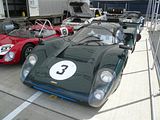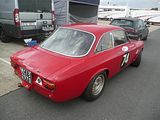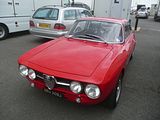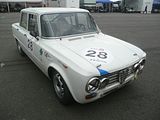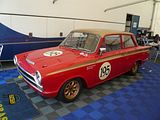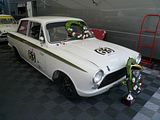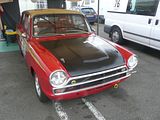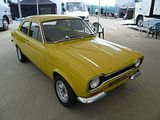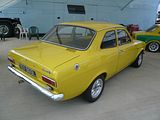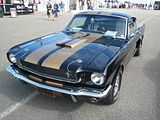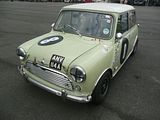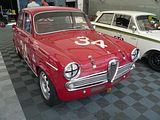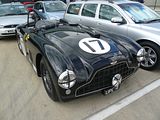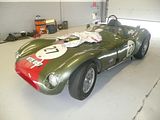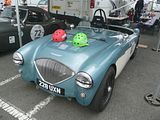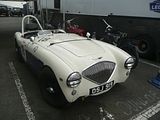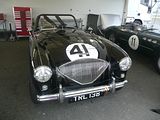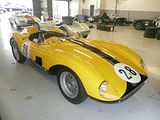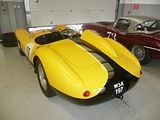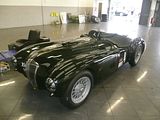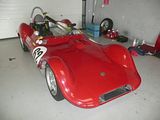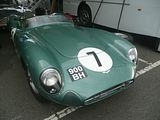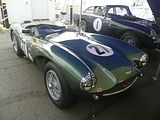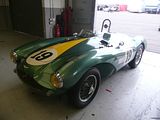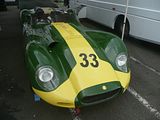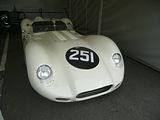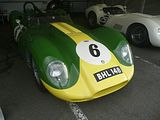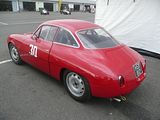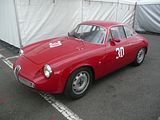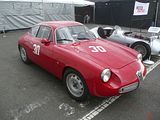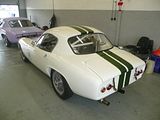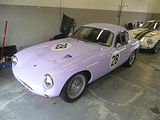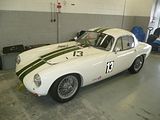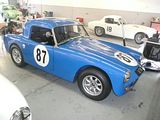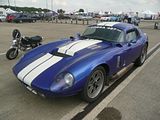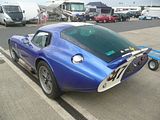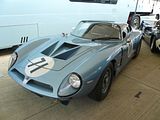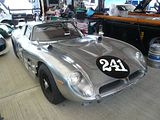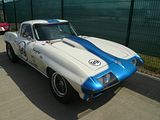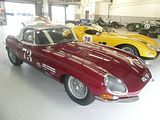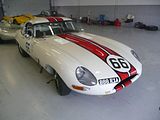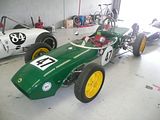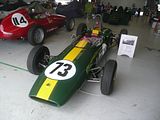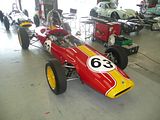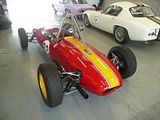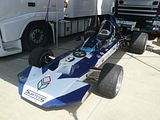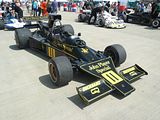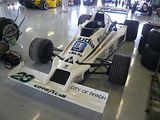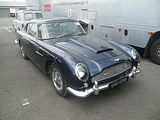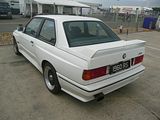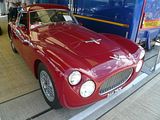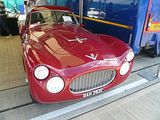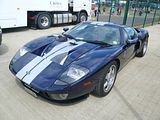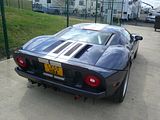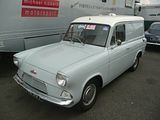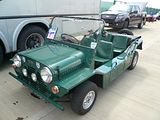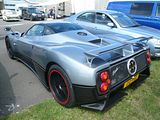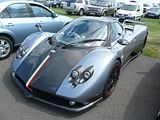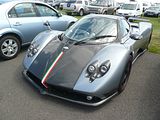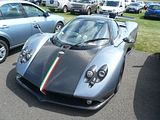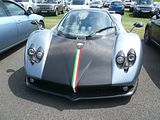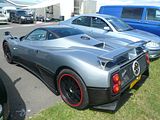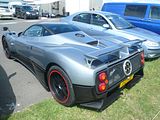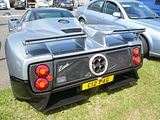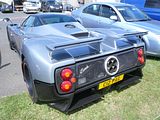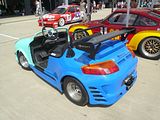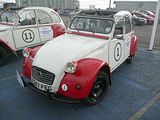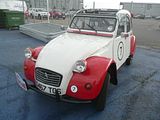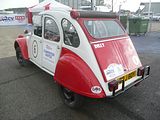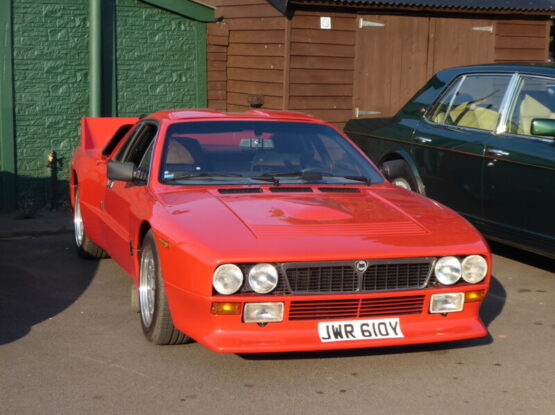The Silverstone Classic has taken place for 24 years, and during that time, the event has grown and grown, with the result that it is easily the largest historic motor racing event in the world. I’ve attended every year since 2007, and quickly discovered that one day is nothing like enough to take in all that is on display and what is going on trackside. Even two days do not really suffice, and as it is a three day meeting, perhaps I need to sneak away from work for the Friday, though with different classes of cars in action on every day, and variety in the Car Club displays, it’s still going to be a struggle to take everything in, even if the personal energy levels don’t run out completely. The 2014 event was blessed with some fine dry weather, and although it did get quite hot, it was not as sticky as it had been, which made it perfect for a weekend of automotive interest. It turned out to be a record event, in more ways than one. A crowd of 94,000 people made it the best attended Silverstone Classic ever, and there was a new world record number of 1125 race entries, beating last year’s total of 1113, with cars competing in 24 races over the three days. As well as featuring historic racing covering more than eight decades of motor sport, there was live music from classic rock bands, a wealth of family entertainment including free fun fair, retail outlets, a host of interactive activities, a two-day classic car auction and air displays, plus that huge showcase of classic cars many of which were celebrating important milestones in automotive history. In 2014 a record parade of 84 Grand Prix cars celebrated Silverstone’s 50th Grand Prix as well as special cavalcades to mark Maserati’s centenary and 50 years of the Ford Mustang. Sadly, for the first time in its history, the event also incurred a fatality, with experienced racer Denis Welch succumbing to the injuries he sustained during the HPCGA race for historic Grand Prix cars on the Sunday afternoon – a poignant reminder that there are dangers involved in motor sport.
CAR CLUB DISPLAYS
At no other event will you see quite so many models and marques lovingly maintained and displayed by their enthusiastic owners. 92 different Car Clubs reserved space, and with over 9000 display cars, it would have have been entirely possible to spend the whole weekend just wandering around the different stands, marvelling at the variety of vehicles on show, many of which come in the “rare” or “have not seen one of those for a very long time” category. Although many of the cars are on show for all three days, plenty are not, so it was worth wandering back a second or third time to see what else had arrived, and we did do an element of that throughout the weekend. Clearly with that number of cars on show, even a snap-happy photographer like me cannot hope to capture everything, but I had a good try!
ABARTH
For reasons that I still do not understand, Abarthisti don’t seem to want to come to this event in anything like the numbers that they did in 2010 and 2011 when over 50 cars assembled. This year we had 3 cars present on the Friday, 6 on the Saturday and 7 on the Sunday, which was rather disappointing. Not surprisingly, most were 500 based, with just one Punto SuperSport on show both the days I attended, and there was another example parked up by the Maserati area. These may have been among the newest cars on show, but they were still attracting lots of attention, with plenty of passers-by peering in, or keen to have a chat whenever I appeared back at the car.
This splendid Abarth Cisitalia was to be found in the display with the historic Maseratis on the second day, after we had seen it in the pits on the Saturday.
AC
The Ace was AC’s sports car which formed the basis for the far better known Cobra, and there were a couple of these on display.
There were vast numbers of Cobra style cars. These reflected the numerous companies who have built replica models over the past 50 years.
Included among the largest display was this, a replica Daytona Coupe.

I’ve seen this Supersonic car once before, at this event. A small number of these very striking cars were made, with very different chassis underneath. The majority of them had Fiat 8V underpinnings, but there were also some based on the Jaguar XK140 and this one which clothes an AC 427 Cobra.
ALFA ROMEO
Tucked away in a corner of the Car Club area, but with excellent views of track action were the Alfa Romeo Owners Club cars, and a very varied display they comprised. I had plenty of favourites from among what was on show. One of the oldest cars on show was also one of the best known in classic Alfa circles, Robbie Savage’s fabulous 1900 SS Touring.
A few years its junior was this lovely 2600 Spider, a car you rarely see these days, as few were made, not many of which came to the UK.
Its smaller brother started out as a Giulietta, but when fitted with the larger 1600cc engine became a Giulia. You can tell them apart by the raised bonnet of the later car, needed, to clear the carburettors of the bigger engine.
There were several of the popular 105 series cars present, with lots of different GT and GTV Coupe models showing the evolution of this model from 1963 until the end of production in 1977.
I was pleased to see this GTC, the short lived open topped model that was only sold for a year or so. Probably my pick of all the Alfa models here.
Spider versions of the car were also much in evidence, including the lovely boat-tailed first generation car as well as the final fourth series model.
There are not many of the 1750/2000 Berlina saloons left, and I don’t think I’ve seen this one before. Nice.
Successor to the 105 series was the Alfetta, and the Berlina models are equally rare, but the Giugiaro styled Coupes, such as this GTV, do appear quite frequently. Very stylish and very desirable.
Also rather nice is the Montreal, and this was a solid looking example of the stylish V8 engined coupe which started out as a concept for the Montreal Expo in 1967.
The 145 Cloverleaf was a cracking car to drive when new, but few people ever found that out. Shame!
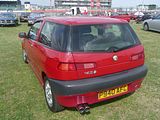
More people did get to enjoy the 916 series GTV and Spider, and whilst values are still low, these cars have already achieved modern classic status, and with lots of cars still around, more should get to enjoy this stylish and fun car.
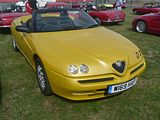
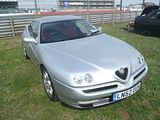
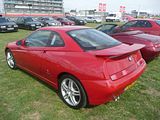

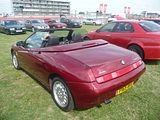
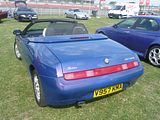
Other relatively recent Alfa on show included a 155, its successor the 156 seen in GTA and SportWagon guises, as well as a GT
This splendid Giulia SS was one of the cars that had been out on the historic run.
ALLARD
Sydney Allard gave his name to a range of British sports cars in the late 1940s and 1950s, most of which were among the fastest machines you could buy at the time. A whole array of different models were produced, some more elegant than others, and some better known that others these days. This one is a Palm Beach, one of the last new designs that was created, is ,more cohesively designed than most of his cars, but it was not exactly a sales success, so this is a rare car these days. This particular car is a Phase 2 car, first seen at the 1956 Earls Court Motor Show. External differences from the original Palm Beach included hidden door hinges and vents behind the front wheels and more comprehensive grill ornamentation, whilst under the bonnet, the four cylinder engine was replaced by a choice of either a Jaguar six cylinder or the base model’s 120 bhp Ford Zephyr six cylinder unit, as fitted to the prototype. One of just six Mark 2s that were built, this car was registered in November 1956, after the Show, and used as a demonstrator and later by Allard Motor Company’s Brian Howard. In 1969 it was sold to the Hemsworth family where it remained until 2012. It did not turn a wheel from 1976, and was eventually offered for restoration to Sydney Allard’s son Alan and grandson Lloyd, needing it, having being kept outside for several years. Two years on, and the restoration of the aluminium bodied prototype has been complete and the car looks stunning, with Lloyd Allard having been credited with doing most of the hard work. What I had not appreciated is that there has recently been a resurrection of the Allard Company, now known as the Allard Sports Car Company, with the initial aim of manufacturing a continuation Mk III Palm Beach and continuation Cadillac powered JR as raced at Le Mans in 1953 and throughout the USA in later years.
These P1 models look more typically Allard, with their long bonnets, required to get the large engine in, and very sloping radiator grille. You could not really mistake it for anything else.
ALPINA
There was a most impressive array of Alpina models on show, with several of the earlier and exceedingly rare cars joined by the current models.
Although the number of cars produced remains tiny, compared to the source BMW models on which they are based, recent press coverage has created new interest in Alpina, and none more so than their 3 Series based cars. There were examples of the B3 and D3 versions of both the current and previous two generation models 3, in Saloon, Touring, Coupe and Convertible guises as well as some earlier cars such as an E30 based 2.7 litre C2.
5 Series based cars included one of the 131 E39 model B10 cars made for the UK and the later E60 B5S, which is 1 of just 12 such cars produced for the UK. It features a 4.4 litre supercharged V8 producing 523bhp, giving a top speed of 197mph

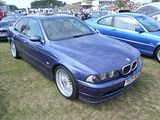
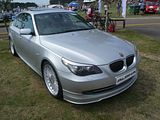
You don’t see 7 Series based Alpina very often in this country, with just 7 of these E65 based B7 models currently on the road, from the 10 that were initially sold here. This also features a 4.4 litre supercharged engine putting out 500 bhp.
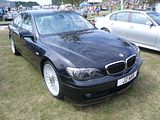
A small number of Alpina Roadster S, based on the E85 model Z4 were made. These had a 3.4 litre engine in them.
ASTON MARTIN
Although there were not quite as many Aston Martins as there had been last year, when the marque was celebrating its centenary, there were still several hundred of this very British car on show. The Club officials worked hard to ensure that the cars were all parked up by model type, which made for a very impressive display indeed. Although there was no factory support for the display, as one official somewhat ruefully told us, there were a handful of new cars on show, including the latest N430 version of the V8 Vantage.
There were just a handful of pre-war Astons on display, including “GreenPea”, the oldest surviving model, and the third car built, dating from 1921.
Also from the pre-war period was this 1939 model 15/98 and a fabulous and slightly earlier International.
During the Saturday morning the initial assembly of a handful of DB6 models grew to become a sizeable display of all three of the legendary 4, 5 and 6 cars that Aston offered from 1958 through to 1970.
Even from early Saturday, there were numerous examples of the car that succeeded the DB6, the DBS and its later V8 incarnations, including the very macho Vantage and the elegant Volante models.
The space-age Lagonda caused quite a stir when it was launched at the 1976 Earls Court Motor Show, with its striking lines and extensive use of electronics for the dashboard. It took a while to get the car into production, by which time it was evident that it was perhaps a bit too ambitious in what it was trying to do, and sales were not great. The car continued to be developed, with the final Fourth Series models getting styling changes to smooth out the sharp edges of the original William Towns design. This is one of those late model cars.
1988 saw the first all new design for 20 years, with a car called the Virage. Like all Astons, the early models were quickly added to with more potent versions, a Vantage model joining an open topped Volante to add some spice to the range, and the Virage badging was soon discarded in favour of the V8 moniker. Although this car was not that well liked when new, it has grown on people, and is now seen as a worthy Aston.
There was no such reticence about the Vanquish when it came out in 2001. A real Aston through and through, this car looked like the more potent DB7 that was exactly what it was, with a monster V12 engine under the bonnet of even the early cars. Later models have even more power in the Vanquish S.
2014 marks the 20th anniversary of the DB7, and I was delighted to be offered a beautifully produced pamphlet which summarises the history of the model which quite literally saved the marque. More DB7s were built than all previous Astons put together.
I was somewhat surprised to find not one, but two out of 99 of the very rare DB7 Zagato models on show here. Apparently there had been a third one present on the Friday. Further adding to my delight was the presence of the open topped DB AR1 (American Roadster 1), a car that was made for the US market, hence the left hand drive and no roof. 99 of these cars were built, too. The coupe was made on a shortened chassis, whereas the AR1 was on the standard DB7 chassis.
There were plenty of the popular and elegant DB9s on show.
Also well represented were the current V8 and V12 Vantage cars.
Finally, there were a couple of the current Rapide model.
AUDI
This is the Quattro version of the Coupe, fitted with a non turbo version of the 5 cylinder engine, and a cheaper offering than the more often seen urQuattro. I had a very soft spot for these cars when new, especially in the facelifted guise as this one is.
AUSTIN HEALEY
No surprise to find lots of Austin Healeys here, with plenty of the Big Healey, ranging from early 100 models of the 1950s through to the later 3000 cars.
There were also more than a few of the smaller Sprite cars, most of which were the first generation “frog eye” models.
BENTLEY
There were a number of the classic Bentleys from the 1920s and early 1930s, with 3 litre and 4.5 litre Blower Bentley both in evidence.
After the acquisition of Bentley by Rolls-Royce, in 1934, the focus of the brand shifted to the production of large and elegant tourers. These cars are generally referred to as the “Derby” cars, as that is where they were built. Featuring 3.5 and 4.5 litre engines, they were supplied as a chassis for the customer then to choose a body style. Many were bodied by Vanden Plas, but there is considerable variety in the cars that were produced. Of 2500 such cars made before the War, about 1500 still survive and many of them are very elegant indeed, such as this one.
I had seen this car at “Classics at the Castle” at Sherborne the previous weekend, but when presented there, no information as to what it was, was available. An information plaque in the window of the car revealed that what is badged Le Sarthe is indeed a modern recreation of an earlier style. Based on an early 1950s R Type chassis, this car has a modern body, and is, what its designer calls a “Special Bentley” as opposed to a “Bentley Special”.
This is an example of the R Type on which that Le Sarthe would be based.
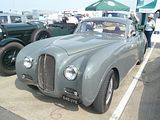
Successor to the R Type was the S Type, and in the best of Bentley traditions, these also came with bodies built by a number of famous coachbuilders as well as the standard factory offering. This one has a Park Ward body on it.
A late model Continental Convertible.
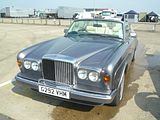
The Mulsanne was launched in 1980 at the same time as the Rolls-Royce Silver Spirit. From being the low volume car relative to the Rolls, as had been the case for the past several decades, the Bentley soon became the model that sold in higher volume, thanks initially to the launch of the rapid Turbo model, and then the development of a range of Bentley models, more widely differentiated from the Rolls than had been the case.
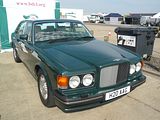
After years when Bentleys were little more than rebaged version of the Rolls Royce, a model that was uniquely Bentley was finally launched in 1992, the elegant Continental R. Later the open topped Azure model joined it at the event.
In recent years, sales of Bentleys have reached previously unseen levels, thanks to cars like the modern Continental GT range, and needless to say, there were examples of these on show.
BERKLEY
One of many small British manufacturers, these cars were made in the late 1950s and early 1960s. These models were called the Bandit.
BMW
BMW were one of the official sponsors of the event, which meant that as well as providing a fleet of white 520d Touring courtesy cars for “VIPs”, they had a very central location and a display of some new models. I quickly discovered that they were selling their ice cream at BMW type prices (ie very costly!), but the large 40 metre high Ferris wheel was free, although we were somewhat surprised when they gave priority to all the stand staff for boarding! It was worth the wait, as the views from the top of the wheel were outstanding.
Although there were not the hundreds of Z cars that graced this event a few years ago, there was still a very impressive collection of these machines on display. My favourite was the lone Z8 – truly an elegant car, and one that has never really diminished in value from the day it was new.
There were quite a few of the Z1 on show as well.
Numerically, there were far more Z3s than anything else, with a good number of the M cars and the fixed roof Coupe models as well as the regular 4 and 6 cylinder open topped cars.
Of course there were examples of the two generations of Z4 as well, again with a few of the rare Coupe cars to be seen.
For some reason, older BMWs do not seem to have the sort of classic appeal that you would expect, and there tend to be surprisingly few of them at any classic car event, but there were some nice older models here. My favourite was an E3 model 3.0S Saloon, an elegant and rapid car which in its day would have been seen as a more sporting alternative to a Mercedes S Class or a low end Jaguar XJ6 2.8.
The E9 was a range of Coupe models which were closely related to the E3 saloon. Based on the earlier 2000C and CS Coupe, these cars had revised styling front and rear, and initially a 2.8 litre straight six engine, which was later enlarged to the famous 3.0i capacity and which in turn led to the iconic 3.0 CSL, the first BMW to bear the three letters to indicate lightened weight. There were a number of E9s present, not all of which were CSL cars.
There were a number of 3 series models, from all 5 generations, including a rare 316 and a couple of Baur cabrio versions of the first car to bear the 3 Series badging,an E21 model, as well as later E30, E36, E46 and the E90 family of cars. Needless to say, there were plenty of M3s in among the display, including one of the very rare E36 model M3 GTs, all of which were finished in a distinctive dark green colour.
Most of the 5 Series cars present were M5s, starting with the innocent looking, but still very rapid E28 model from the mid 1980s, and ranging through successive generations of E39, E60 and the current F10, the E34 being conspicuous by its absence.
E24 6 Series models remain one of the better looking large Coupes of their era, and these cars still have plenty of appeal even now, nearly 40 years after their launch. There were several of the 635CSi and M635CSi cars present.
Replacement for the 6 was the E31 8 Series, a car which never quite captured the same appeal when new, as it had grown rather portly, though with the potent 5 litre engine under the bonnet, it was still rather rapid. Several of these were also on display.
Far rarer than any of these was this, one of few surviving 1st generation E23 7 Series cars, a beautifully preserved 733i.
This “Neue Klasse” 2000 is a relatively late version of the car which BMW launched in 1960 as the 1500, and which lay the foundation for all modern BMWs, so that makes it a very important car. Few were sold in the UK, as it was very expensive compared to local competitors, such as the Rover and Triumph 2000, so it was good to see this one.
Parked next to it was one of the 02 cars, the slightly smaller and cheaper model that started out as the 1600 in 1966, and which quickly gained more power to become the 2002 and then the 2002tii. These were also expensive in the UK, and sold in small numbers to those who appreciated the quality of engineering and driving characteristics of the model.
BMW had a number of brand new models on show, as well, and there was ample opportunity to have a good look at these. It’s been a busy year for BMW with lots of new models, and the very latest one, yet to go on sale, is the first front wheel drive car ever to bear the BMW roundel, the 2 Series Active Tourer. The press had been muted in their enthusiasm for this car, partly because they did perhaps not get the optimum engined versions to try. My reservations were different: it is simply very expensive for what it is. Although practical enough, a Kia Carens – which has a remarkably similar silhouette – is around £10,000 cheaper, so why anyone would pay 70% more money just to have a BMW is something I would struggle to justify. But I bet lots of people do. I was fortunate enough to miss hearing one of the stand staff declaring that the car is the same as 2 Series Coupe underneath and that it is £6000 cheaper than a B Class Mercedes (where do they get such well trained people from?).
The latest M3 and M4 were on display plinths, the latter in Pistonheads Edition, which seem to amount to lots of additional carbon fibre, none of which I would want. Actually, I don’t think I would want an M4 at all, as it looks rather gawky, compared to the neater M3.
BMW’s current Touring Car, based loosely on the 1 Series Hatch, the eBay Motors 125i M Sport, as driven this year by 2009 BTCC champion Colin Turkington, was also on a display plinth.
BRISTOL
A small showing of these most eccentric of British luxury cars comprised a variety of different models from the 60 years of production. 403 cars were parked up with the later 407 and 411.
CATERHAM
A huge gathering of Caterhams repaid careful study for those who wanted to see the evolution of this legendary sports car in the 41 years since Caterham acquired the rights to manufacture it from Lotus.
There were even a few of the original Lotus badged cars among the display.
Included among them was one of the ill-fated C21 cars, a short lived venture by Caterham to build something with more weather protection than the Seven.
CHEVROLET
Last year marked the 60th anniversary of America’s longest running sports car, and whilst this American icon has never sold here in anything than tiny quantities, it has acquired plenty of fans during that time, several of whom brought their cars along. All 6 generations of the model (the C7 has only just gone on sale in America) were represented.
CITROEN
A small collection of SM always tend to be shown at this event, and this was the case in 2014, with just a handful of this stylish GT on show.
On the Sunday the SMs were joined by a CX in long wheelbase Prestige guise.
I found this AX GT in the area of cars that had returned from the classic run.
DAIMLER
The SP250, to give it its proper title, or Dart as everyone knows it was a slightly gawky looking sports car that Daimler launched in 1959, aiming at the market for two seater open topped GTs. Its biggest problem apart from some early build quality issues, came with the launch of the E Type Jaguar in early 1961, which offered so much more style and performance for around the same money. These days, though, the Dart has an appeal all of its own.
There were a few of the V8 250 cars, close relative of the Mark 2 Jaguar, parked up with the many Jaguar models.
EVANTE
Parked up next to the Lotus models were a series of Evantes, a car which clearly took its inspiration from the Lotus Elan. You don’t see these cars very often, but there are always several at this event.
FAIRTHORPE
The Zeta was a small British kit car made in the early 1960s.
FERRARI
The Ferrari Owners Club always bring a huge number of cars to this event, and 2014 was no exception. with lots to see. Cars were to some extent grouped together by model type, with the V12 cars at one side and the far larger numbers of V8 models constituting the main rows of the display. Significant models were displayed on their own so people could get a closer look, and needless to say, plenty of people wanted to do just that. A couple of F40s proved to be every bit the show stopper that this model always has been, ever since its launch 27 years ago.
A lone F50 proved to be a real star, too.
Later in the day, and again on the Sunday, there were a number of Enzo models on show. I had to tell someone who asked me what it was. His excuse was that they don’t get cars like this in Cornwall! Needless to say, the Enzos remained a real crowd puller all day long.
The 458 Speciale is brand new, and this would be the first opportunity for many to see the latest version of Ferrari’s V8 engined 2 seater.
This gorgeous 275 GTS arrived mid afternoon on the Saturday, and then took up its place in the display.
The even more valuable 275 GTB/4 was on show during the Sunday.
Sixties models were few and far between at this event, but there was a rather nice 330 GTC here.
Some years have seen rows of the utterly divine Dino 246 GT on show. That was not the case in 2014, but there were a few of this little beauty in the display.
There were not the number of 365GTB/4 “Daytona” models this time which sometimes have featured, either, but I did find this fabulous Spider model.
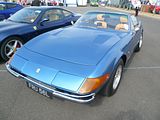
There was one example of the 365GTC/4, a car that Ferrari only made for four years in the early 1970s.
After years in the doldrums, the 308 GT4 is now valued and respected as proper Ferrari, and values have risen accordingly.
That has not quite happened for its successor, the Mondial, but it surely will, as this is still a good looking car, especially with the later facelifted front end styling, and especially in open topped guise.
The 308/328 GTB and GTS remain popular models, and who can be surprised as they look good, and sound great, even if by modern standards they are not that powerful.
One such car had been adapted to produce what at first glance looked like a 288 GTO. Look a bit harder and it was quite clear that it was not, and that it was not even a very convincing effort at recreating that special car at all. Not impressed!
There were plenty of the 348 and F355 models as well. Prices for the former are on the up, with people realising that it was maybe not quite as “bad” as the press said when the car was new.
Ferrari sold more of the 360 Modena and F430 cars than anything that they had made to date, so it was not a surprise that these were the most numerous models in the display. As well as the regular cars, in coupe and cabrio guise, the rarer cars such as the Scuderia, Challenge Stradale and 16M were among them.
Although criticised by some when launched for being too soft and hence not quite true to the brand, the California has sold well, and there were, unsurprisingly, quite a few of these among the display.
The 458 Italia has been on sale for four years now, and although you don’t see them on the roads as often you do its predecessor, it is clear that quite a number have been sold. More recently, sales have shifted in favour of the Spider, which is what was predicted, so it was not a surprise to find bot just a good number of these cars here, but a mix of Coupe and Spider models.
One of the longest running Ferrari cars was the model which started out as the 365 GT 2+2 and which became the 400 and later 400i and 412i. Viewed with suspicion and disdain by many, these cars are now starting to be appreciated for what they are – an elegant grand tourer with seats for four and a sonorous V12 engine.
A number of the Berlinetta Boxer cars were on show, with both the 365 GTB and later BB512 models present. I am really not convinced that bright yellow is the best colour for this model at all.
There were also plenty of examples of the car that succeeded it, the Testarossa and later 512TR.
There was a whole line of the elegant 550/575 Maranello models.
There were very few of the more recent V12 cars, which was a surprise, with only a handful of 456GT, 612 Scaglietti and just a couple of 599 GTBs, though surprisingly there seemed to be a complete lack of F12 Berlinetta.
This was the only FF model that we saw all weekend.
When I saw this car from a distance, I, like just about everyone else thought “250 GTO”. But it is not. It is technically a 330 GTO, but like so many early Ferraris, the history turned out to be more complex than that. Starting point was a 1965 330 GT in Grigio Argento, bought by the Earl of Earsham. 20 years later, the car was being broken up for spares, just leaving a badly corroded chassis, but the V12 engine, gearbox and running gear were all deemed salvageable. What was left was bought in 2000, and a 9 year total rebuild took place to create this accurate copy of one of the three original 330 GTO’s, complete with a dimensionally perfect body. As with an original 330 GTO, this car has a dry-sumped 4 litre Columbo V12, 6 Weber carburetters, Veglia gauges, front and rear GTO dampers and Borrani wheels.
FIAT
There were not many Fiat models on show, but I did come across a display by the X1/9 Owners Club, which comprised all manner of cars from some of the launch edition cars with their distinctive black side stickers, to the last Gran Finale cars.
This delightful Nuova 500 was in one of the trade stands.
FORD
The 50th anniversary of the Mustang was billed as one of the special highlights of this event, and indeed it was. As well as the track parade, which sadly I missed, there was a vast static display of over 250 cars from the 50 years of production, making this the biggest ever showing of the model in Europe. Almost all the cars on show bore UK plates, and I had no idea that there were quite so many of these cars on our shores, as the car has never been officially imported here, but over the years clearly a number of cars have been brought into the UK, and the Mustang Owners Club GB currently has over 1500 members. Thanks to careful planning, the end result was a most impressive display with over 250 models showcasing all 50 years of ‘Pony Car’ evolution together with some legendary Mustangs from movies such as Gone in 60 Seconds, American Gangster and Bullitt. To many people’s eyes, the first generation cars are still the best looking, although the styling did evolve quite noticeably over the years, losing some of the simplicity of line. Not entirely surprisingly, there were no examples of the much scorned Mustang II on show, but there were plenty of models from the generations that have ensued.
Ford even sent along an early example of the new for 2015 car which was revealed a few months ago, and which will go on sale in the UK, in right hand drive. This one had the V8 engine fitted, and sounded fantastic even when it was just being moved a few yards around the display area.
Well known dealer specialising in Mustangs, Bill Shepherd, had a whole load more Mustangs on show, any of which you could have bought have you wanted to.
I came across this duo of Cortina models parked together: doyen of company car fleets, a late model 1.6L with one of the rare Crayford converted Mark 3 cars.
A trio of Sierra Cosworth models were shown with a number of mirrors under them, proving that the underside of the cars were almost cleaner than the top surface. Whilst it is great to see that cars are being well cared for, it was almost sad to see that these, which would be great to drive, are clearly show vehicles more than they are road cars.
Parked up near the Sierra on the Sunday were a duo of Escort Mexico cars, the sporting version of the Mark 1 Escort produced to mark the models’ success in the 1970 London to Mexico rally. With them was the even rarer Twin Cam model.
A Mark 2 RS1800 was to be found elsewhere in the event.
Not perhaps a “classic” in the understood sense of the term, but certainly rare these days was this Sierra 1.8 GL hatchback.
Rarer still, as it is a one-off, is this open topped version of the Ford GT. Just as there were a very few Spider versions of the original GT40, so Ford decided to do an open topped version of the GT car. The result, called GTX1, was shown at the SEMA show in 2005. That is not this car, which appears to be a modification of that GTX1 and made in the UK. Further intrigue comes from the fact that it is actually a red car that’s been wrapped in yellow. I have to say that the panel gaps on the car, such as around the fit of the engine cover, were little short of awful, too! You would have thought that modern design and production methods would have ensured that this one looked tighter than its forbear, but that was not the case.
There was also one of the “regular” GT cars as well.
A grouping of GT40 cars turned out, not entirely surprisingly, to comprise more recent recreations of Ford’s iconic 1960s supercar.
GILBERN
This Series 2 Invader was parked up behind the Ferrari Owners Club stand. Gilbern was a fibre-glass bodied car, fitted with a 3 litre Ford V6 engine which was very nicely designed, lacking the crudity of kit cars at the time, but it was very costly when new, retailing for a lot more than an E Type Jaguar. The firm folded in 1974, soon after the imposition of VAT which made the cars completely unaffordable for their target buyers.
GINETTA
A small collection of Ginetta models show-cased some of the different cars that this marque which refuses to die has offered over the years.
The G4 was the first real Ginetta and such was its popularity that the model was re-introduced in the 1980s to cater for those who were looking for an affordable track car that could be taken on the road, who did not want at Caterham.
One of my favourite models, and a car you rarely see was this, a G21S. This neatly styled car, first seen in 1970, was based on a variety of components from a number of volume marques, using front suspension from Triumph, a rear axle from a Hillman Hunter, the unmistakeable Morris Marina door handles, all wrapped in a bespoke fibreglass body which followed the same styling theme as the MGB GT. Three standard engines were offered, with the top of the range G21S eschewing Ford power for the Holbay tuned Rapier H120 unit, which gave the car excellent performance, as well as good handling. Combined with build quality which was far better than the contemporary Lotus Elan, it is quite a surprise that only around 70 of them were made.
Starting point for this was a car called the G25. First shown in 1983, this was a mid-engined kit car, based on Fiesta components. Feedback on the G25 indicated that potential owners were more interested in a type approved turn key vehicle and so Ginetta revised the G25 prototype into the type approved G32. It took until 1989 to get the G32 into production, and it launched with a mid mounted 1.6 litre engine from the Ford Escort XR3i or a 1.9 litre / 115 cui version enlarged by Specialised Engines. By 1990 a more powerful 110 bhp unit had been fitted which meant that the G32 was capable of reaching 60 mph from rest in 8.2 seconds and had a top speed of 120mph. But the market had moved on, as two formidable rivals had appeared: the Toyota MR2 and the Mazda MX5, as well as the minority appeal Reliant Scimitar SS1, so sales were slow. Around 100 G32s were built, along with a further 20 convertibles before Ginetta folded (temporarily).
GTM
Based on the humble Metro, these small kit cars were mainly produced in the 1990s, and this is one few events I know of where you are ever likely to see more than the odd example.
HALFORD
This 1923 Halford Special was on show from the Brooklands collection.
HONDA
Every year that I’ve attended this event, there has been quite an assembly of the NS-X model, and 2014 was no exception, with a very colourful display of these impressive cars on show. There was a good mix of closed and Targa models, and cars from early in the production cycle to the later models with their glass covered headlights which was a styling change made when pop-up lights were outlawed.
Near to the NS-X were an even larger gathering of the S2000 cars, Honda’s still popular sports car of the early twentyfirst century.
ISO
There are only a handful of Iso cars in the UK, so you tend to see the same ones at events, not that this is a bad thing, as they are really rather splendid machines. However, their ranks were swollen on this occasion by a number of German plated cars, none of which I had seen before.
The Rivolta was Iso’ first production car, setting a trend for Italian styling combined with American V8 power. The styling on this was suitably restrained, but the performance was anything but. It competed against cars like the Maserati Mexico, and whilst I think I would have preferred the Maserati, this was still a desirable machine.
The Grifo is probably the best known Iso, and there were more of these than the other Iso models on show.
The Lele was one of the last models offered, taking its name from the founder’s wife, and offering more space for a family, whilst still combining the explosive performance of a large Ford V8 under the bonnet of a relatively light and stylish Italian body. Two were on display.
JAGUAR
The various Jaguar Owners Clubs had their own area up on the banking, which accommodate a vast number of cars. We never reached this on the Saturday, but instead the cars came to us, as a number of the XK cars were scheduled for an evening parade around the track, so as we stood still, a vast number of these cars filed past us, ready for their ride around the circuit.
Included among them was one of the XKRS-GT cars.
Also in their number was the oh-so-desirable F Type.
The following day we did get to see what was parked up, and found examples of just about every model type made by the famous Coventry firm over the past 60 years. My rather unscientific conclusion is that there were more E Types than anything else. If that was not actually the case, then there certainly were an awful lot of them, all three Series, and a mix of Roadster and Fixed Head cars.
There were plenty of its antecedent as well, the achingly beautiful XK120/140 and 150 series of cars made from 1948 until 1961.
The XJ-S was seen as something of a disappointment when first launched, but these days it is viewed with considerably more enthusiasm, and there were plenty of these cars on show, ranging from the early V12 Coupes through the later Cabrio and Convertible cars and plenty of the V6 models as well as that silky smooth V12.
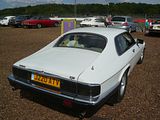
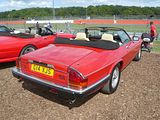
The XJ6 generation of cars was represented by a mixture of saloon and the very pretty Coupe models.
The Mark X was a gargantuan car by the standards of the day, and even now it appears wide and quite imposing.
Far more restrained was the Mark 2 car, several of which were present, along with the later 340 which was a slightly simplified and cheaper model produced for the last couple of years of the model’s life.
There were plenty of more recent cars, as we had seen the previous evening, with XJ, XK8 and XK cars, as well as S and X Types and some XFs
There was a nice row of C Type models, almost all of which, I suspect, were recreations rather than any of the original factory cars. We came across another example which had been out on the historic run.
There were also a few D Type cars, also likely to be replicas, albeit very well done cars.
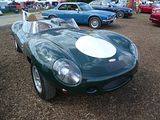
Highlight of the display was the combination of an XJ220 and an XJR15, two fabulous supercars from the early 1990s. Very different, and equally desirable.
JENSEN
I did not find a specific Jensen Owners Club stand this year, but did come across this elegant Interceptor in the event.
LAMBORGHINI
A few years ago, Lamborghini was barely evident at this event, but that has changed, and there was a strong showing in 2014, with examples of most of the model types that have been made in the 51 year history of the firm. Highlight for many was the arrival of a right hand drive Huracan, Lamborghini’s latest model and replacement for the long running Gallardo. Destined to become a familiar sight in the more affluent parts of London and anywhere inhabited by Premier League players, no doubt, this appears rather more restrained than some of its antecedents.
Noisiest Lamborghini, by some margin, was this Iota, which made a very loud entrance and exit on both days I was present. Sadly, it is not the original car, as that machine, a competition spec prototype Lamborghini Muira Jota burned to the ground on the unopened Brescia ring road in April 1971, but a member of Lamborghini Club UK has built this wonderful replica of the prototype, and unless someone told you, you would not know that this car actually started out as a standard 1967 Miura.
There were several of the four seater Lambo, the Espada, on show. Six cars at one time, I believe.
The Jarama was also a four seater, or if the kids are small, even a 5 seater, as we observed when one of these cars arrived!
It was good to see examples of the V8 car that started off as the Urraco in the early 1970s and which gradually evolved through the open topped Silhouette, and ended up as the more potent 3.5 litre Jalpa.
There were lots of Countach cars here, with a mix of 5000S and Anniversary cars among their number.
The Diablo was well represented, with both closed and open topped cars present.
That was the case for the Murcielago as well.
One of the Murcielago bore the signature of chief test driver, Valentino Balboni, evidently added on the occasion of Lamborghini’s centenary in 2013.
With a production life of 10 years, over 10,000 Gallardo models were built, so no surprise that there were more of these than any other model present.
Included among them was this Gallardo GT3 racing car.
The Aventador has been available for a couple of years now, and whilst it is not a common sight – and likely never will be – several have clearly been sold, as there were plenty of these in both closed and Spider guises.
On the Sunday, there was an example of the first body style that Lamborghini made, in the later 400GT guise.
LANCIA
A number of Italian coachbuilders created bodies for the large Lancia of the late 1950s and early 1960s, the Flaminia. This pair of cars are Pininfarina’s design, and was this version that Lancia at the start of the Flaminia’s life, with Touring and Zagato versions coming later. An example of the Touring car, the grey one, was parked up late on the Saturday afternoon.
Farina was also responsible for this, one of the loveliest Coupes of the 1960s, the Fulvia. This is a late model Series 3 car.
Of all the different body styles that were offered on the ill-fated Beta, it is the Spyder which was the rarest when new, though the survival rate of these cars is better than the Berlina models, so you do see nice examples like this one from time to time.
There was a nice example of the ever popular Delta Integrale, for once not a red car. Black suits it, too.
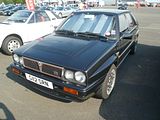
I was delighted to see this, one of my favourite Lancia models, and a car that is now very rare indeed, the 2000 HF Coupe. An evolution from the Flavia, this PininFarina styled car just looks so right, in an elegant and unfussy way.
There was a display completely focused on the Stratos. None of the cars on show were the real deal, but were kit cars that recreated (in most cases very faithfully) the details of the most iconic rally machine. With the variety of historic liveries in which the dozen or so cars were painted, this was a very colourful stand indeed.
LAND-ROVER
Early Range Rover have definitely become very collectible, and price tags of the very first cars have risen to what looks like absurd levels, extending the interest in the not quite so old models as well. On show here were examples of the first and second generation Range Rover, showing how the car has evolved from what now seem like quite utilitarian beginnings (the navy car from 1971) to the luxury machine of more recent times. The display included a rare Monteverdi converted pickup. and a converted fire tender as well as a far more recent G4 Challenge vehicle.
LOTUS
A vast area on the banking on the outside of the circuit was given over to Lotus models, and just about every model type ever made could be seen here. The display included some very early cars, including a Mark VI, a Seven and an Eleven.
The Elite was the first of the fully enclosed sports cars made by Colin Chapman, and there were a few of these tiny little machines gathered together.
The Elan based cars were more scattered among the display. When assembling all the photos, I could tell not just that there were a lot of them, but there was evidence of the evolution of this car over its 11 year life.
There were quite a few of the larger Plus 2 model which first appeared in 1967, as well.
Lotus were forced to change their product strategy following the introduction of VAT in 1973, and they elected to go up market, with a trio of cars, the Elite, Eclat and Esprit. There were lots of the last of these on show, with a good mix of the Giugiaro styled original cars as well as the later Peter Stevens styled facelift.
There were none of the Elite or Eclat models, but the later Excel was represented.
There were a number of the front wheel drive Elan models to look at.
It is hard to believe but the Elise will soon be celebrating its 20th anniversary, and in that time, lots of different versions have been produced, many of which could be seen here.
The Europa was a short lived model that never really captured anyone’s imagination, so it is a rare sighting. There were a few of them here.
Despite favourable press reviews at launch, the Evora has not been that big a success either, as it is probably rather too expensive for what it is. Several of these cars were also displayed.
Thankfully, Lotus are now producing a few more cars than they managed to make (and sell) a couple of years ago, and they had a small display with the current range on show, for people to look at. These included the latest V6 Exige as well as the Evora and the familiar Elise.
A separate display of Lotus Cortina models contained a mix of the two different body styles that were offered.
This Lotus Carlton was tucked away on a trade stand, and would likely have been missed by many attendees.
MARCOS
There was a very impressive display of Marcos cars, which ranged from some of the early models from the 1960s to the designs that were made in the last years of the company early in the twentyfirst century.
The first design to find success was the GT that was launched in 1963, powered by a Ford 1600cc engine. More powerful versions quickly followed, culminating in a car with the Ford 3 litre V6 which made the car quite brisk, but the body styling altered little for many years. There were a number of cars from this period in the Wiltshire marque’s history.
The Mini-Marcos was a smaller model, based, as the name suggests, on the BMC Mini.
The Mantis was a brave new design that was launched at the 1970 Earls Court Motor Show. Despite showing much promise, the car was not a success and fewer than 30 were made, so these cars are very rare.
In the 1990s, a bewildering array of subtly different models, most of which require a sneaky look at the badge unless you are particularly well versed in the marque. Cars on show here included a Mantaray

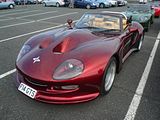

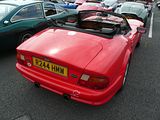
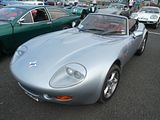

Wackiest model of the lot was this one, an LM500.
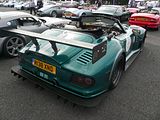
MASERATI
Founded in 1914 by Alfieri Maserati in Bologna, the company quickly achieved legendary status on the world’s racetracks and roads. Although the first car was not actually made until 1926, 2014 is the centenary year for the firm, and there are all manner of events taking place around the world to mark this achievement. We had been promised something special fat the Classic, and to my mind, we absolutely got it. Working closely with Maserati GB and the Maserati Club UK, the 100th anniversary festivities at this event will be the biggest in the UK this year and one of the largest marque celebrations in the world. A vast area was given over to a mix of Owners Club cars, a display of brand new models, and some very significant historic models, some of which were to be seen in action on track during the event. I am pretty sure I’ve never seen so many cars with the famous Trident badge on it in one place as was the case here, and although some of the cars were familiar from other events, there were plenty of examples that I had never seen before.
As has been well documented plenty of times in recent months, Maserati has ambitious plans to grown their sales volumes to 50,000 cars a year. That will be achieved by shifting their focus from cars like the GranTurismo and GranCabrio which have been the mainstay of the range for years, to a series of new cars. One, a luxury SUV tipped to be called Levante, is yet to be launched, but the other two key sales weapons are here now, the new 6th generation Quattroporte and the slightly smaller 5-series rivalling Ghibli. There were a lot of these cars on show, open for people to inspect, and I have to say that they do feel extra special from inside, combining traditional Maserati touches with all the things that are needed and expected in a modern executive car. I was also most impressed when I heard a Diesel Ghibli at the recent Stanford Hall. On start up, at idle and under a throttle loading. this car just does not sound like a diesel at all. It is on my short list of cars for the 2016 replacement of my Audi.
The established GranCabrio was also on show, available for interested parties to get in and have a closer look. This one eschews the rather excessive carbon-fibre that appears on many of the MC Stradale models, and looks all the better for that fact.
In addition to these cars were a vast assembly of Owners Club cars, with an area of hard standing filled by the more unusual and older models and a large area of grass covered in more recent cars. They made for a very striking sight.
First Maserati road cars built in any sort of volume were the 3500GT and GTi cars, launched in 1959. A glorious Vignale styled Spyder version soon followed. There are more of these around than you think, and several were present at this event.
The Sebring was based on the earlier 3500 Coupe, but with altered styling and host of other changes.
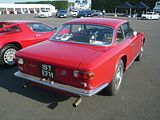
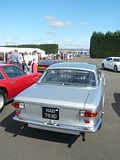

The first car to bear the Quattroporte name was launched in 1963. At the time, it was quite unlike anything else on the market, combining a practical four door, four seater body with the mechanicals of a real Maserati.
The Mexico was a stylish coupe model with four seats that was offered from the mid 1960s until the end of the decade.
The first car to bear the Ghibli name was an elegant fastback Coupe, styled by Gandini, and made in small quantities, as a rival to the Ferraris of the day. Later versions included an even mode beautiful open topped model, and a more potent 4.9 litre engine which was called the SS.
The Indy followed a similar format to the Ghibli, but was a four seater car (just about!). Not revered in quite the same way as the Ghibli, I think this is also a fabulous looking car, and one which is currently somewhat undervalued by the market.
Bora was Maserati’s supercar of the 1970s, but for some reason it never quite captured the same level of interest as the equivalent Ferrari and Lamborghini models. Maybe it was because it had a V8 engine rather than a V12, but despite this, it was almost as fast, and certainly as good looking, perhaps in a more restrained way. You don’t see them that often, so I was delighted to find three in the displays at this event.
The Merak was always intended as a cheaper version of the Bora, and was even offered with a 2 litre engine to get round Italy’s punitive tax laws.
Maserati showed a new Quattroporte model in late 1974, the worst timing of all for a complex, expensive and thirsty car, with the world plunged into recession and petrol shortages. Just 12 of these cars were made before the car faded away. As such, this is one of the rarest Maserati models of the lot. This Manx plated cars can be seen quite frequently at shows, though, and it was good that it was here to complete the set, meaning that there were examples of every generation of Quattroporte on show.
Final Maserati model to appear from the Citroen era was the stunningly beautiful Khamsin. Like all other Maseratis until this point, this exclusive GT sold in small numbers with only around 350 ever made. It is one of the most beautiful shapes ever built, in my opinion. One of those on show was signed by its designer, Marcello Gandini.
The Kyalami was the first product of the deTomaso acquisition, and amounted to a Maserati-ing of the established de Tomaso Longchamps. The body was modified a bit, and a Maserati V8 engine replaced the Ford unit that saw service in the Longchamps. Just over 300 were produced from 1978 to 1982.
A third generation Quattroporte was announced in the late 1970s, though this car remained somewhat below the radar, and relatively few of them were ever made.
In late 1982, Maserati replaced all their range with a new, and cheaper model, the BiTurbo. Over the next 17 years, a bewlidering array of different models appeared, as the engine was enlarged, and then 4 door and open topped cars were added to the range. Later models included the Karif – effectvely a hard topped version of the Spyder – and the Shamal, a V8 engined version of the standard car which by now was called Ghibli. There were many examples from this period of Maserati’s production on show.
A fourth generation Quattroporte was launched in the mid 1990s, and its Gandini styling was very strongly influenced by the smaller BiTurbo models. This was a “nearly” car, not quite hitting the mark to take class honours, and with a reputation for unreliability and expensive maintenance costs which kept it somewhat in the shadows. Even now, when they are very cheap to buy, it is probably something of a brave purchase.
Although the Ghibli 2 had evolved into quite a decent car, Maserati knew that they needed something new and better and that car was the 3200GT, a stunning looking car that appeared in 1998. This car really did “save” Maserati, and with the later Spyder and then the 4200 models that appeared, sold in significant volume. The cars were well built, so there are a lot of them still around, and needless to say, plenty were present at this event.
Next model in the evolution of the brand was a new Quattroporte and when this appeared in 2003, everyone agreed that it was one of the best looking large saloons ever made. Initial models were saddled with a less than impressive gearbox, but this was quickly addressed and this car also sold strongly. There were plenty of these to inspect, too.
That bring us to the current range, and there were lots of these: GranTurismo and GranCabrio, and the latest Ghibli and Quattroporte.
Highlight for many would be the MC12 that had been seen at the Goodwood Festival of Speed a few weeks ago. This is a stunning machine, and one which never really got the publicity it deserved, when new, as it was somewhat in the shadow of the Ferrari Enzo.
Two marquees contained an array of significant racing Maseratis, some more familiar than others. The car I have seen quite often is this fabulous 1935 4CS. We had a long chat with Ken Painter, who has owned this car at Donington earlier in the year, and gleaned much of its history, which is also recorded in an article in the August 2014 issue of Classic Cars magazine. This particular car won its class on the 1935 and ’36 Mille Miglia. Later in 1936 this car, chassis number 1126 was sold to Ignazio Radice Fosatti who recorded a second in class run on the Coppa Mercanti run on the Stelvio hillclimb before going to Monza for an attempt at the 1100cc 12 hour distance record. Unfortunately Ignazio was killed in the 9th hour of the attempt after hitting a dog that strayed onto the track. The car was badly damaged, but once repaired it was sold on. Between 1937 to 1939 it was owned and raced by Count Giovanni (Jonny) Lurani and Luigi Villoresi, and back in May, Ken showed me a long type-written letter he has from Lurani, dated 1970 which records Lurani’s memories of the car from the time when he raced it. Subsequent research has revealed that not everything recorded there is quite accurate, but this is still a splendid piece of history to go with the car. However, it was what happened next that makes its history particularly fascinating. By 1942 the 4CS was in Singapore, and was confiscated by the Japanese army and its then owner killed. The late owner’s family recovered the car, and had it dismantled and buried for the remainder of the War. The last recorded competition entry for the car as at the 1950 Jahore Grand Prix, by which time a 3.5 litre SS Jaguar engine had been fitted. Some time after this, a De Soto V8 motor replaced this, and the body work underwent several changes. Ken acquired what remained of the car in 1969, and spent 18 years restoring it. More recently he gave it to his son, Adam, who now owns and races it.
Maserati had a habit of mixing bodies and engines, so identifying them can be a challenge, but the sign associated with this car said that it was an 8C
This one is an A6GCS
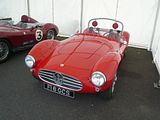

In the 1950s, the 200, 250 and 300S constituted the core of Maserati’s efforts. These cars are more or less impossible to tell apart, the key difference being the engine.
This one is definitely a 300S, dating from 1955.
1957 450 Special
This 450S dates from 1960.
No display of classic Maserati would be complete without the iconic 250F, and sure enough there were three two here from the total of just 26 cars which were made in the mid 1950s.
Far more recent was this Ghibli Cup, dating from 1995.
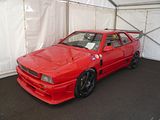
The display also included a series of motorbikes. I will admit that I had no idea that Maserati had produced bikes, but it turned out that they did, in the 1950s and early 1960s.
MAZDA
By now, you no doubt know that 2014 marks the 25th anniversary of the MX5 and 20 years of the Owners Club, and there have been lots of special displays throughout the year as well as Limited Edition model to celebrate the longevity of what has become the world’s best selling sports car. A vast array of cars here represented all three generations of the much loved sports car.
MERCEDES-BENZ
Relocated, as were many other Car Clubs, to a more central position, the Mercedes Owners Club were right next to the Abarths, so I was able to see what else had arrived in the display every time I returned to my car. There was great variety, ranging from some very recent or even current models, to plenty of “classic” Benz.
There were a number of the very desirable W113 “Pagoda” models included in the display, with 230SL and 280SL cars among them.
Replacement for the W113 was the R107 range, which came both as open -topped SL models and -until 1981 – the fixed roof 4 seater SLC car. Examples of both were on show.

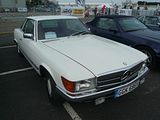
Mercedes have frequently offered Coupe and Convertible versions of their cars, but these generally sold in relatively small quantities when new, as they were expensive, so it was nice to come across this W114 model 250CE as well as several of the earlier W111 cars, a lovely 220SE Coupe, the larger engined 300SE coupe and the later and much admired 280 SE 3.5 Coupe, as well as really desirable Convertible model.
I first saw this fabulous “Fin Tail” W110 model 200 at Ace Cafe last year, when the owner told me how the car had started out life in Singapore, property of his father. It has never left the same family, and was shipped back to the UK when it was three years old, and passed on to the current driver when his father passed away, It has been repainted to a very high standard, and the interior looked equally immaculate. A real period piece.
This ex John Lennon 600 appears quite regularly at shows, and a very impressive sight it is. The 600 was popular with many of the Leaders and Dictators of the world, and whilst quite a few have survived, the restoration costs of what was a fearsomely complex machine compared to its contemporaries has deterred many from preserving these imposing cars.
Another lovely Mercedes was this W121 model 190 SL. Styled very much like the much more costly 300SL GullWing, these cars are finding new levels of interest (and pricing!).
Just ceasing production, after a few short years, the SLS AMG remains a real attention grabber, and the couple of examples on show – a black car on the Saturday and a silver one on the Sunday – were no exception. Elsewhere was an open topped version of the car as well.
This Mercedes 280 SE 3.5 was to be found parked up near the Silverstone Auction house area.
An equally splendid, if rather more austere “Ponton” 180 was to be found elsewhere in the event.
MG
No surprise that there were lots of MG classics to be found throughout the event, with various Owners Clubs having displays. Most numerous, of course, were the ever popular MGB models, and there were lots of these on show, in both Roadster and the closed coupe MGB GT, as well as a few of the rare V8 cars and some of the 6 cylinder MGC models.
The MGR V8 was launched in 1992, as a precursor to the commercially more significant MGF. In some ways, this could be seen as the first of a series of “retro” inspired cars, made popular by the latest VW Beetle, Fiat 500 and MINI, but that was probably not quite what was in MG’s mind when they launched what was essentially a modernised MGB with the Rover V8 engine under the bonnet. A modern classic, many of the cars went initially to Japan, but a lot of them have since been reimported here.
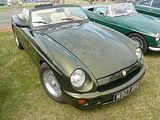
The Midget is just about as popular as the bigger B, and there were plenty of these on show, too.
Precursor to the MGB, of course, was the MGA, and this is also a popular classic, well represented here.
Forerunner to that car was the MG TF, a short-lived, but very desirable traditional British sports car.
The TF badge was revived for the facelifted MGF car, and there were examples of this popular and recent MG sports car on show.
Much rarer was this fabulous MG 1300, a sporting saloon based on the car that was Britain’s best seller in the 1960s, the ADO16 Austin/Morris 1100/1300. With a twin carburettor on the familiar A series engine, these cars had far more power than the standard models (it is a relative term!), and with their excellent handling, were quite popular when new. Rust claimed almost all of them, though, so they are very rare now.
Bringing things right up to date was an MG6. I’ve seen quite a few of these cars at events this year, so despite what the purists may say (and they do indeed have plenty to say!), it would seem that this car has been embraced by the MG fraternity.
MINI
The iconic Issigonis designed Mini is a popular classic and there were a few of these on display in various places at the event.
MORGAN
As ever at this event, the factory had a display which complemented the rows of Owners Club cars, meaning that there were lots of different Morgans to see. The latest models included the very popular Three Wheeler that Morgan can barely build fast enough, as well as the traditional Roadster and the nice but pricey AeroMax Super Sport.
Morgan has a proud tradition motorsport, and this was a factory prepared GT3 car.
Most of the Owners Club cars were the “traditional” shape, but, with varying ages on show, featuring all manner of the different engines which have been used over the years.
There were gulps of surprise and disquiet when this, the Aero, first appeared, with many complaining that it is not a true Morgan. These days it would seem to be well accepted that it is.
I suspect there were even louder howls of protest when this car was shown in 1963. This is one of just 26 Plus 4 plus cars that were built. The fact that so few were made says it all. Morgan’s efforts to build a more modern and civilised sports car were something the market was not ready for, and the car was a commercial failure.
More recently, of course, there have been further new body styles, and the AeroMax cars have been enthusiastically received. A number of these were in the Owners Club display.
At the more affordable end of the range is the new Three Wheeler, a run away success for the brand, applying modern engineering to the same concept as the little cars that made Morgan so famous in the 1920s and 1930s.
NISSAN/DATSUN
The 240Z Owners Club was right next to the Abarthisti area, so I got to see these cars every time I returned to my car. Included among the display was the very car that was driven by Autocar magazine as a Long Term car back in 1971, and now beautifully cared for.
Among the various more recent Skyline models was this, a splendid and very rare 1960s car.
NOBLE
Making a particularly colourful showing were a collection of M12 Nobles.
PANTHER
The Panther Owners Club had an interesting array of cars on show, even if there were not quite as many models present as had been the case in 2013. The majority of them were the Lima and Kallista pastiche sports cars which were made from 1977 until the firm’s demise in the early 1990s.
Striking centre piece of the display was this, a de Ville Cabrio. When launched in 1976, the de Ville was about the most expensive car you could buy. Powered by a Jaguar V12 engine, it was intended to be a modern recreation of the Bugatti Royale. Only a handful were made.
Parked in one corner of the display was a car whose styling resemblance to the model which inspired it were perhaps more obvious, the SS100 Jaguar. Panther called theirs the SS, too, initially, and sold a modest number of these cars throughout the 1970s and into the early 1980s.
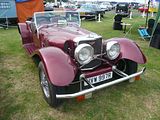
PEEL
Made famous by its appearance on Top Gear a few years ago, the Peel was a Manx built microcar from an era when cars of this size were popular. On the rare occasions that they come up for sale, the prices are simply eye watering – we are talking a six figure sum!
PEUGEOT
This 309 GTi, a rare survivor of a car that was rated to be quite decent when new, was one of the cars that had been taking part in the Classic Run.
PIPER
This event is The place to see examples of this little known British sports car from the late 1960s and early 1970s, with a solid showing of cars year after year. True to form, there were 5 examples on display this year. Just 80 of these cars were built.
PORSCHE
There were vast numbers of Porsche models on display, with a massive area allocated solely to this marque. Whilst there were fewer than last year’s special celebration of the 911’s 50th anniversary, there were still several hundred different examples of this evergreen classic, ranging from some of the early short wheelbase cars of the early 1960s through the later G series cars to 964s, 993s, 996s, 997s and plenty of 991s. It was good to see a couple of examples of the 991 model GT3 indicating that these cars are back in their owners’ hands again after the engine problems of earlier in the year.
There were plenty of the front engined cars, too, with representatives of every type of 924, 944 and 968, in both closed and convertible forms.
The 928 was also much in evidence with lots of these elegant GTs on show.
In contrast, there were only a few of the early 356 cars.
There were even fewer of the 914 model. Not many people realise that over 100,000 of these were built, with the majority finding their way to America, and because they were relatively expensive when new, not that many were sold in Britain.
Boxster and Cayman models were also present, with all generations of the cars on show, including some of the rarer models, such as the Cayman R and the Boxster Spyder.
Centre of attention, though, was with the Carrera GT which was to be found right by the Porsche Owners Club marquee.
RENAULT
In previous years there have been more Renault badged cars at the event than was the case this year, but the marque was not completely unrepresented. Right in the middle of the display area were a collection of the Clio V6 in both first and second generation guises.
Elsewhere were the Renault-Alpine cars with a number of A610 and GTA models on show.
ROVER
A nice assembly of P6 models showed the evolution of this popular compact executive. Display cars ranged from some early models to some of the much sought after 3500 V8 cars, as well as a late car in the very period Avocado paint. The car was notorious for having a small boot, and one popular solution was to mount the spare wheel on the boot. One of the cars on show illustrated this arrangement.
Nice to see a clean example of the SD1 model.
SRT
SRT is the new brand for performance vehicles from the Chrysler organisation, so the current Viper bears its branding and not Dodge any more.
SUNBEAM
2014 marks the 50th anniversary of the launch of the Tiger, the V8 engined version of the Rootes Group’s MG competitor, the Alpine. To my mind, this car looks better than the MG, and in Tiger form, it certainly sounds and goes better, too. A number of cars were on show, including a few of the rare Series 2 car.
TOYOTA
It is 30 years since the launch of the little MR2, an event which seems not to have been celebrated in the way that the sporting Toyota’s most direct rival, the Mazda MX5 has, but these cars are now seen as modern classics. There was quite a gathering of first generation models, in various states of repair and orginality.
TRIUMPH
The ever popular Stag was offered in a wide variety of colours during its 7 year life, and whenever you get a decent number of the cars together, you can be pretty sure that almost every colour that was available will be represented and a colourful display will result. That was the case at this event, with over 50 Stags on show, and everything from white to the bright yellows, blues greens and reds to the darker shades was available for inspection.
The TR Register is a staunch supported of the event, and they had an impressive array of every different model from TR2 to the last TR7s and 8s.
Also in their display was a very nice Dolomite Sprint. This was a relatively late car, so although it might appear to be in the signature colour of Mimosa Yellow, I think this is actually Inca Yellow instead.
The Triumph Owners Club had a more varied collection of cars, ranging from a pair of Dolomite through a Vitesse Convertible, Spitfires and GT6s to the larger 2000 Saloon and a couple of Stags.
Elsewhere I came across a Herald 13/60 Convertible and the more powerful 6 cylinder Series 2 Vitesse Convertible and a Mark3 Spitfire
TURNER
These small British sports cars from the 1950s were based on BMC or Triumph components.
TVR
The TVR Owners Club always amass a vast number of cars, and with the bright coloured pain finishes which were popular on this most British of sports cars, the TVR area is always a colourful sight. 2014 was no exception with several long lines of the different models that were offered by the Blackpool marque from the start of production in the early 1960s until the sad demise in 2006. It was good to see a few of the early cars, including a couple of the Vixen, a car which was still very clearly related to the earlier Grantura.
Surprisingly, the “wedge” era was completely unrepresented, but there were a number of the S, the car that followed, and which set the stage for the explosion of new models in the 1990s.
Most of the cars on show were from the last 15 years of production, with examples of everything that TVR made during this time, so a mass of Chimaera, Griffith, Cerbera, Tuscan, T350, Tamora and Sagaris.
VOLKSWAGEN
A couple of the Type 1 Karmann Ghia models were gathered together in the centre of the circuit.
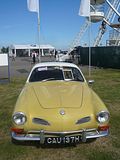
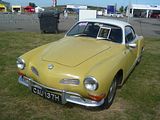
VOLVO
There was no specific Volvo Owners Club stand, but I did find this rather nice 122S.
BRDC AREA
It is always worth a wander into the area around the back of the BRDC Club House and the old hospitality suites, as there tend to be all manner of interesting cars just parked up. Last year this was where we came across the various Pagani models, and whilst there were none of those to be seen this time, there was plenty of other nice and rare stuff
AC
A lovely Ace, the car that ultimately was modified to become the legendary Cobra.
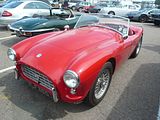
ASTON-MARTIN
There were a couple of splendid DB5s in here.
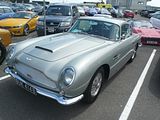
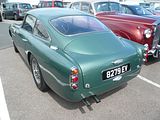
AUSTIN
A nice little Seven model.

BENTLEY
What could be more British than this, a 3 litre Bentley?
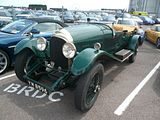
BMW
One of the most elegant BMWs of recent times, the 6 Gran Coupe, in M6 guise. A lovely car, but with a rather large price tag. Even before you add any options, there are only a few £s change from £100,000.
CHEVROLET
Who could miss such a distinctive car as this bright yellow Camaro SS?
There was also a C6 version of the Corvette, also not a car for the quiet and introvert sort of owners.
FERRARI
This fabulous 250 Tour de France arrived, 5 up, just as we were admiring some of the other cars that were parked up. A 250GT “Long Wheelbase Berlinetta” acquired the soubriquet “Tour de France” after successfully competing in the 10-day Tour de France automobile race, not the famous bicycle race of the same name. 77 of these Tour de France cars were built., a number of which were sold for GT races from 1956 through 1959. Construction was handled by Carrozzeria Scaglietti based on a PininFarina design. The engine began at 237 bhp but rose to 256 bhp by the end of production. This particular car appears to be chassis #1035GT with which Cuban sugar baron Alfonso Gomez-Mena and a co driver known only as Meyer competed on the 1958 Tour de France. The pair did not finish the event but Alfonso is known to have competed in at least 6 further events with the car. In March 1959 Alfonso shared #1035GT with fellow Cuban Juan Montalvo in the Sebring 12 Hours where they finished 20th overall and 2nd in class. The pair shared the same chassis the following month in the 1000km race at Daytona were classified 12th though their engine expired before the finish. Alfonso then took the car to Cuba where he finished second in the 1959 4 hour Almar race, 2nd in the 1960 Havanna GT race and finally 11th in the 1960 Cuban Grand Prix. There are also results for a 1959 race in Venezuela called the Ojeda City Grand Prix, no precise date for which is given, but Alfonso is credited as the winner beating the only other known contestants, Venezuelan’s Lino Fayen and Ettore Chimeri who were also both driving Ferrari 250 GTs though the order in which the latter finished is also unknown.
Rather more recent was this, a 612 Scaglietti.
FORD
This is Chris Notley’s fabulous GT40. I never did see Chris, though.
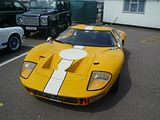
JAGUAR
Among the various Jaguars in this area were a couple of nice Mark 2 Saloons and a number of E Types.
MCLAREN
No surprise to find Britain’s latest supercar, the MP4 12C in here. More of a surprise is that it was the only one we saw at the event all weekend.
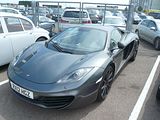
MERCEDES-BENZ
We caught this GullWing 300SL driving out of the area just as we were heading in for a look.

MG
This was a lovely example of the MGC, the somewhat undervalued 6 cylinder version of the popular MGB.
MINI
Early Mini models, such as this Austin Se7en are highly collectible these days, and prices have risen to the frankly unbelievable.
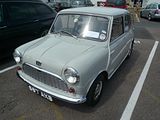
PORSCHE
I don’t think I’ve ever seen quite as many (genuine) 911 RS cars as were parked up in this area.
ROLLS-ROYCE
Although these two cars, a Mark 1 Silver Cloud and the very latest Wraith, are very different, reflecting the 60 years between their production dates, they are both very imposing machines indeed.
TRIUMPH
A nice TR4.
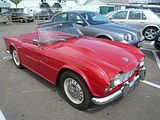
SILVERSTONE AUCTIONS
World renowned Silverstone Auctions sell off a vast array of cars during the event, and they extended their activities to a second day for 2014. They had a special display area down by the International Pits. A few of the cars were on show outside, but most were inside, and when we learned that you had to pay an additional £20 for a program to gain admission, like just about everyone else present, we politely declined, so were not able to see all the interesting cars that were up for grabs. That was a shame., as the publicity had stated that there would be a mouth-watering mix of classic cars and memorabilia to go under the hammer, with highlights including Jackie Stewart’s first-ever racing car – an extremely rare 1960 Marcos GT Xylon – a Lotus 18 Formula Junior once raced by John Surtees plus two of the world’s most famous fighter aircraft: a 1976 Harrier GR3 Jump Jet and a 1988 Tornado F3. The ones we could see included these:
Alfa Romeo Giulia 1300
1998 Bentley Continental T – this is the shorter wheelbase version of the Continental R
BMW M635 CSI
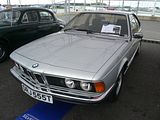
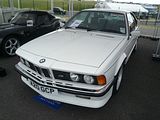
1971 Datsun 240Z
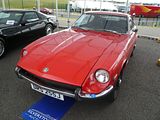
Ginetta G21 – I was surprised to see a second one of these over the weekend. The bright yellow paintwork did it no favours, but otherwise this was an interesting classic.
Jensen Interceptor Convertible
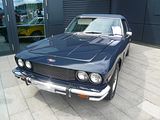
Lea Francis
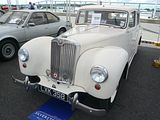
Maserati Ghibli 2
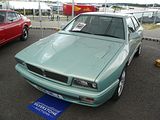
Morris Minor 1000
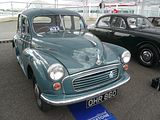
IN THE PITS and PADDOCKS
Although the Club Displays are vast and engrossing, the heart of this event is the racing. This is the largest historic racing event in the world and that means that it attracts vast grids of cars of every type and more than a few famous names who wish to take part. Many of the classes, and the cars and drivers are familiar from one year to the next, but the organisers always look for something new, and this year they certainly succeeded. New grids for the 2014 event included 90s GT Legends and the Brian Henton Trophy for Classic Formula 3 which drew an amazing turnout of 44 entries from the feeder formula’s heydays in the Seventies and Eighties, the legendary Nigel Mansell and Ayrton Senna era, and they joined perennial favourites such as the historic F1 cars from the much-loved DFV age and fiery Group C prototypes that – as tradition dictates – race into the Saturday evening sunset, as well as again on the Sunday afternoon. With such an array of machinery assembled to take part in 22 separate races on the track over the three days of the event, it must have come as quite a relief when the new International Pits were opened three years ago, as events like this can now spread out over the old and new pits. giving competing teams far more space. It does mean that the spectator needs to schedule time to visit both, and getting to the new International Pits is still a bus ride, or a long walk. With unrestricted access to all the garages as well as the area behind the pits, it is well worth it, though, as there is so much to see, and indeed it would have been quite easy to spend a whole day just taking in what was on offer.
FAMOUS NAMES
Every year, Silverstone Classic attracts more and more star drivers and 2014 continued that progression. No fewer than five former BTCC champions competed: making their Classic debuts were Matt Neal and Gordon Shedden, both among the current BTCC series’ front-runners as members of the 2014 Honda Yuasa Racing squad swapped their regular Civic Tourers for a newly acquired Lotus Cortina, which they shared in the popular two-driver race for Under 2-Litre Touring Cars (U2TC) on Saturday morning; 2009 BTCC Champion, and current leader in 2014 with his eBay Motors BMW 125i M Sport, Colin Turkington debuted behind the wheel of a stunning BMW CSL ‘Batmobile’ and mighty Ford Galaxie, which constituted his honeymoon (yes, really!); John Cleland and Tim Harvey have competed before and came back for more and to relive their glory days, the former having procured his 1997 Vauxhall Vectra in the pair of JET Super Touring Car Trophy races. Titlist in 1992 Harvey, who now commentates on the BTCC for ITV4, was to be seen behind the wheel of a Ford GT40 in Saturday evening’s FIA Masters Historic Sportscars. Rob Huff is another tin-top champion bitten by the historic racing bug. The 2012 World Touring Car Champion joined the Super Touring grid in a Ford Mondeo and will also be competing against the big-bangers in his giant-killing Mini. Rock legend, AC/DC front man Brian Johnson was another of the plucky Mini exponents. Other famous names on the entry list included ex-F1 ace and Le Mans winner Jackie Oliver, Le Mans winner Andy Wallace and sportscar champion Jamie Campbell-Walter. Oliver raced a Mustang with considerable success in the Sixties and as well as doing so again, came along with the objective of a repeat victory in the Royal Automobile Club Tourist Trophy for Historic Cars – a race he won 12 months ago sharing a fabulous Ferrari 250 GT SWB with renowned historic racing specialist Gary Pearson. Wallace won Le Mans for Jaguar in 1988 and was here to drive the XJ220 LM in the 90s GT Legends. Campbell-Walter was another taking a speedy trip down memory lane – having a blast in the 90s GT Legends. He won the 2000 FIA GT Championship in a Lister Storm and was reunited with the awesome Jaguar powered machine as part of this amazing gathering.
90s GT LEGENDS
New for the 2014 event was this, something to remind us of some amazing cars that raced in the 1990s. These on-track icons date from 1994 to 2000 when production-based GT cars once again ruled the endurance racing world. This welcome resurgence followed the demise of the Group C prototypes and harked back to bygone epochs when sportscar racing was dominated by exotic street machines rather than purpose-built specials. Although the series had a relatively short life, the period saw a vast array of cars compete, ranging from specialist small-volume production sportscars such as Ascari, Lotus and Venturi to factory programmes from McLaren, Porsche and Mercedes and even the odd hypercar such as the Bugatti EB110 and XJ220. Such was the escalating interest in this latest generation of racing supercars that by 1997 the FIA had created a GT1/GT2 World Championship and with it came a new breed of even faster ‘homologation specials’ taking advantage of regulations that only required a small production run of 25 similar road cars to be built. These included the Porsche GT1, Panoz Esperante and Mercedes CLK-LM. Once announced, the line up for this event quickly developed into a mouthwatering field of over 40 cars, topped by Ferrari F40s, Jaguar XJ220s, Lister Storms, Porsche GT1s plus no fewer than six fabulous McLaren F1 GTRs including at least one of the ten ‘Longtail’ versions, each valued at more than £3m. That was the incentive that was needed to get an official factory entry from Porsche who brought along their 998 Le Mans-winning 911 GT1 for current works-driver Brendon Hartley to pilot. Although the 90s GT Legends wasn’t technically a race, the cars were unleashed for flat-out blasts around the full Grand Prix circuit on all three days. Even viewed as static objects in the pits, they made for an amazing sight, and for many (me included) the highlight of the entire event.
Probably the most special cars of the lot were the six McLaren F1 GTR cars, Seeing one of this is a rare enough thing, but to get to see six is just incredible. All were built in 1995 and 1996. The yellow car is #27, the black one #19 and a test car, the Gulf liveried one is #12 and came 9th in the 1996 le Mans event, the white and red one is #03, and came 4th in the 1996 Le Mans event before being road registered in 1997, the red one with a yellow stripe is #10, a test car which was never raced, and the plain red one is #13.
Ferrari F40 LM
Ascari GT1
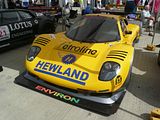
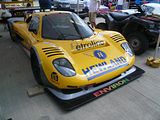
Dodge Viper GT2 cars
Harrier GT1
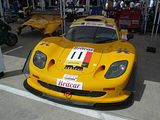
There were three Jaguar XJ220 models including the GT Martini race car which I have previously seen at Chomondley as well as an XJ220 LM and a road going version of the car. Sadly an engine fire on the first outing brought a premature end not just to the chances of seeing the GT car in action, but also truncated the outing for all the cars on the Saturday.
Marcos LM600 GT2

Morgan Plus 8 GT2
Porsche 911 Carrera GT1 and Evo
Stealth B6 GT1
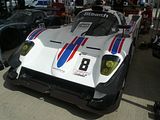
GROUP C CARS
In terms of pure speed, the Group C prototypes topped the racing bill at this event. It turned out these superfast, and super loud machines from the Eighties were making their only UK appearance in 2014. The impressive line-up included a return for the sole-surviving Jaguar XJR-14 that set a new Silverstone Classic lap record last summer in the experienced hands of Nic Minassian. This year Gareth Evans was behind the wheel and he faced challenges from a pair of rumbling Mercedes C11s, no fewer than six Porsche 956/962s and the rapid Nissan R90CK of Japanese hot-shoe Katsu Kabota. These cars sound just amazing when fired up, and make for a spectacular sight on the track. Arguably the highlight of the Saturday schedule was the chance to see these evocative Group C cars from the hugely popular eighties and early nineties Le Mans era as they blasted into the evening sunset, with the Mercedes C11 of Bob Berridge taking the win after coming out on top of an early battle with the Nissan of Katsu Kubota. The Japanese driver actually took the lead in the first few laps, making an impressive manoeuvre past Berridge at The Loop. But when the Nissan ran wide at the same corner a few laps later, the Mercedes stormed through and immediately pulled away. The fight for third looked to have ended abruptly end when the Nissan R90 of Steve Tandy spun luridly across the track while closing down the Gebhardt C91 of Michael Lyons ahead of him. Lyons later retired with a mechanical problem, however, and Tandy eventually recovered from seventh to finish fourth – losing out on the final podium place to Mike Donovan’s Spice SE88 by just 0.180s. Sadly, we did not see any of this as we ran out of energy before the start of this race and had retreated to our hotel and the pub, but history was repeated on the Sunday afternoon when, in glorious sunshine, Berridge and the Mercedes C11 continued complete domination at the head of this field of ultra-rare racing machinery. The Mercedes led from lights-to-flag, crossing the finish line almost 30 seconds ahead of the field after 30 minutes of flat-out racing. Behind the Silver Arrows was Justin Law’s Jaguar XJR8, which took the position from Steve Tandy’s Nissan R90 at mid-distance. Another Nissan looked set for a podium place, as the R90CK of Katsu Kubota – which took second in the previous evening’s race – surged through the field before a spin put him out of contention. Tandy held on to take the final podium spot by less than a second ahead of Adrian Watt’s fast-charging Spice SE89. We happened to arrive in the pits just as the cars were being readied for the Sunday race, so got a good look, and listen as they were wheeled out and onto the grid, before watching them in action. Definitely one of my favourite classes of race!
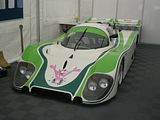
Gebhardt C91
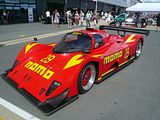
Jaguar XJR8 and XJR14
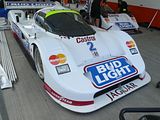
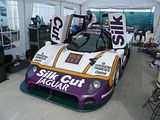
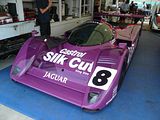
Lancia DC2
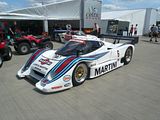
Lola T711
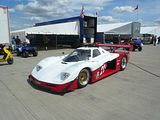
Mercedes C11
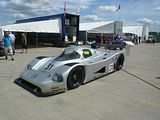
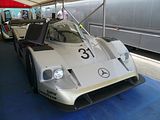
Nissan R90
Porsche 962
Spice SE88 and SE89
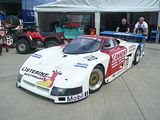
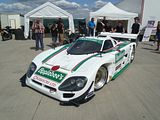
TOURING CARS – THE SUPERTOURING CHAMPIONSHIP
Despite the best endeavours of the current Touring Car organisers, the golden age of this category of motorsport is widely agreed to have been in he 1980s and 1990s when heavily modified versions of the sort of car which you, or maybe your dad, drove could be seen scrapping for honours in some of the most competitive racing to be seen on our TV screens. I was certainly very proud of the sticker which came in my new 1995 Alfa 164 which declared that Alfa had won the Touring Car Championship the previous year (in an Alfa 155). Ever since the Silverstone Classic provided the launch pad for these legendary Touring cars to return to action, interest in the category has grown dramatically, so much so that the previous arrangement of invitational races has now developed into a full-blown championship. The Super Touring Car Championship reawakens memories of a golden era of saloon car racing, when a multitude of major manufacturers and leading drivers from all over the world clamoured to compete in the British Touring Car Championship. Not only does the Silverstone Classic provide the championship with its flagship event, but also drivers from the famous tin-top age such as John Cleland, Tim Harvey and Patrick Watts all compete, and we certainly saw some of them before they set off on track. A grid of over 40 cars from the 1970s to the late 1990s assembled for this enthralling series. On the Saturday, Honda Accord driver James Dodd hung on to claim a dramatic victory after fending off a race long attack from Stewart Whyte in a similar machine. Dodd got the jump on Whyte on the opening lap with the Peugeot 406 of Patrick Watts tucking itself behind the lead duo. The two Hondas quickly pulled clear and in true BTCC-style swapped placed several times whilst an even fiercer four-car battle ensued for third place. Watts was joined by the Alfa Romeo of Neil Smith, John Cleland’s Vauxhall Vectra and the Renault Laguna of Simon Garrad. Like the leaders ahead of them places were exchanged regularly throughout the contest, and though Watts retired late on with a mechanical problem, it was former BTCC champion Cleland who eventually came out on top to score a hugely popular podium. Other BTCC legends also contested the race, with Steve Soper scoring a top ten in the Ford Capri whilst 2009 champion Colin Turkington fought his way up the order in the BMW ‘Batmobile’.On Sunday, the Honda Accord of James Dodd took the honours ahead of former World Touring Car Champion Rob Huff, who was piloting one of the legendary Prodrive-built Ford Mondeos. The #1 Accord of Stewart Whyte was third, whilst old BTCC rivals Patrick Watts and John Cleland came fourth and fifth respectively. On the Sunday afternoon, in the second race, Rob Huff made an amazing start and slotted into second place in the Ford Mondeo behind the Honda Accord of James Dodd. Dodd defended valiantly for the first couple of laps before Huff made a move stick. The Honda stuck to the rear bumper of the Ford for the whole contest, but Huff was able to withstand the pressure to win by just 0.710s. The race also featured superb comebacks from double BTCC champion John Cleland, who was tipped into spin in the first corner on lap one, and fellow BTCC hero Patrick Watts, who started at the back of the field after retiring from the first race on Saturday. The pair finished just off the podium in fourth and fifth respectively after epic drives. I was able to have a good look at many of the competing cars as they lined up on the grid on the Sunday afternoon.
Alfa Romeo 156
Audi A4
This “Batmobile” BMW 3.0 CSL bore the famous BMW ‘Art Car’ livery as penned by US artist Alexander Calder back in 1975.
BMW M3
Ford Capri


Ford Mondeo
Honda Accord
Nissan Primera
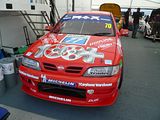
Peugeot 406
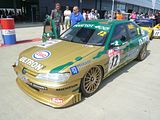
Triumph Dolomite Sprint
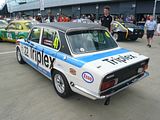
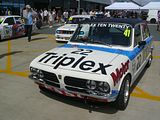
Vauxhall Vectra
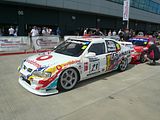
HISTORIC SPORTS and TOURING CARS
As in previous years there were eye-catching fields of genuine sportscars out in force, many with capacity 58-car grids, featuring plenty of cars which can be seen racing around the globe throughout each season. They included illustrious icons from earlier epochs: Jaguar C-types, D-types and E-types; Lola T70s; Ferrari LMs; Aston Martins DBRs, AC Cobras and a host of other famed deities, as well as races for mighty American V8 muscle cars from the Sixties, hugely popular Super Tourers from the Nineties and what turned out to be a fiercely fought, two-driver Sir John Whitmore Trophy for Under 2-Litre Touring Cars race.
FIA MASTERS HISTORIC SPORTS CARS
Always destined to be an exciting class to watch, the Historic Sports Car class contained a full-capacity 58-car grid of Le Mans style GTs and prototypes from the Sixties and early Seventies. Leo Voyazides and his team-mate Simon Hadfield claimed victory in an exciting race which ended with Lola T70s filling the top four positions. It hadn’t looked likely early on, however, when front row starter Martin O’Connell’s Chevron B19 streaked away with the lead. An unseen altercation with another car unfortunately put the pace-setter out of the race shortly before mid-distance, however, and once Hadfield got behind the wheel of the #1 T70 there was no looking back. There was drama aplenty in the challenge for the other two podium positions as Andy Wolfe hauled his machine back up the order and into second. The journalist pairing of Chris Harris and Richard Meaden claimed the last place on the rostrum after a late pass by the similar machine of Steve Tandy. Former FIA GT Champion Jamie Campbell-Walter produced the comeback drive of the race in the quite fabulous Ferrari 512, eventually taking eighth after an early spin for his team-mate left the car way down the order. Another interesting addition to the driver line-up was famous singer Chris Rea who piloted an Elva BMW.
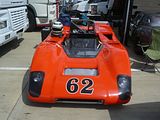
Daren Mark 2
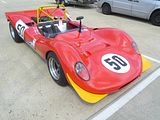
Elva
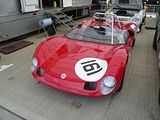
Ford GT40
Lola T70
McLaren M1C
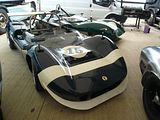
The Porsche 911 has a long an illustrious career in motor sport and there were plenty of competition models here, including the incredible RSR.
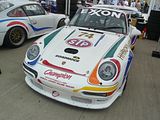
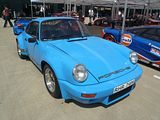
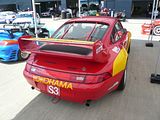
SIR JOHN WHITMORE TROPHY FOR UNDER 2 LITRE TOURING CARS
On the Saturday, it was a quite incredible 50 minutes in the Under 2 Litre Touring Car contest, with a fitting win for the Ford Lotus Cortina 50 years after Jim Clark won the British Saloon Car Championship in the same model. It was current BTCC star Gordon Shedden that stole the headlines in qualifying to claim pole, but on the rolling start it was second placed driver Richard Meaden that took the initiative and led into turn one. A genuinely enthralling race unfolded in front of the huge Classic crowds, with the two Cortinas trading places countless times as the identical looking machines were locked in combat for well over half an hour of racing. As the pit stop phase began, however, the battle for the win was cut short as the #152 Cortina of Shedden suffered a radiator issue that prevented his BTCC team-mate Matt Neal from going out for the second stint. With a big gap, Meaden was able to pit and second driver Grant Tromans cruised to a comfortable win ahead of the Neil Brown/Richard Dutton pairing in their Cortina.
A number of Alfas competed in this event including 105 Series GTA and GTV cars as well as both a 105 Series Giulia and a 101 Series Giulietta Berlina
The Ford Lotus Cortina is one of the most popular historic saloon racers, and lots of them were competing for honours. Among them was the car recently acquired by Matt Neal and 2012 British Touring Car Champion and Silverstone Classic debutant Gordon Shedden. The latter proved to be one of the stars of the show as he secured a pole position and a third place in his Ford Lotus Cortina.
The Ford Escort was the successor to the Lotus Cortina on the track, and this one was joined by a road going Mexico in the pit garage.
MUSTANG CELEBRATION TROPHY presented by PURE MICHIGAN
The first generation Mustang is a popular car in historic racing, and so it is no surprise that in this, its 50th anniversary year, rather than there being just a few of these cars competing, no fewer than 32 race prepared cars were entered in the two thundering Mustang Celebration Races, proudly presented by official sponsor, Pure Michigan. In both, there was a capacity 58-car grid, so the Mustangs did not have things all their own way. The massive Ford Falcons always put in a strong performance, and this event was no exception, with the duelling Ford Falcons of Leo Voyazides and Mike Gardiner engaged in incredible battles at the head of the field in both their Mustang Celebration Trophy races. On the Saturday, the Ford Falcons took top honours in first and second place, following an action packed race where on a frantic first lap which saw the spectacular #6 Mustang of Henry Mann narrowly avoid disaster, the Falcons of Leo Voyazides and Mike Gardiner sped to the front chased by the eager Ford Lotus Cortina of BTCC star Gordon Shedden. The battle for the lead was sensational, with the huge, thundering machines trading places at every opportunity. Voyazides eventually made it across the finish line just under one second ahead of Gardiner, but it was to be a heart-breaking final lap for Shedden, whose car ground to a halt from a podium-scoring position. This elevated Tom Roche to third spot, giving the Mustang a fitting flourish in its namesake race. On Sunday, it was Gardiner who led for almost the entire race, having lost out in the first Mustang Celebration Trophy by just 0.799s. Just as it seemed that he would take a well-earned win, he pushed the #37 car just beyond its limits rounding Copse corner and spun away his winning trophy. As Voyazides powered through to take his second win, Gardiner just held on to second place ahead of the Mustang of Tom Roche, completing an identical podium to the first race. This frenetic flourishing finale was a fitting end to an incredible Silverstone Classic.
Also in this class were a number of Mini Coopers and an Alfa Guilietta Berlina
RAC WOODCOTE TROPHY FOR PRE ’56 SPORTS CARS
The spectacular showdown for pre ’56 sports cars had all the hallmarks of a classic endurance race, with pit-stop dramas and amazing drives through the field, the hour-long spectacular wowing the Sunday morning crowds. The Cooper-Jaguar T38 led from the front with Frederic Wakeman at the wheel, pulling out a sizable lead during his stint. Positions looked to be set stable as the race neared mid-distance, but as ever the pit-stop phase shook everything up and left some very quick drivers scattered throughout the order. The leader emerged from its stop just 11 seconds ahead of the #115 Kurtis 500S in second, and the gap remained constant for much of the remainder of the contest. Further back there was an amazing drive through the field from the beautiful #7 Jaguar D Type. Following John Pearson’s opening stint in the car, his brother Gary took to the wheel and set about speeding up the order and into contention for a podium. Lapping several seconds per lap quicker than the drivers ahead, Pearson made it through to third and then closed down the Curtis of Charles Knill-Jones at an impressive rate, with the mounting pressure forcing a mistake and allowing the Jaguar to sweep through into second place. There wasn’t quite enough time on the clock for the flying D Type to challenge for the lead, and it eventually crossed the line 13.376s behind the winning Cooper T38.
Allard J2
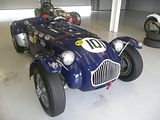
Fabulous Aston Martin DB3 from 1953 and DB3S
Austin Healey 100/4
Cooper T20/25
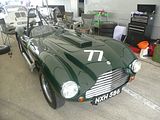
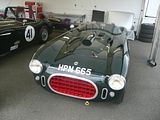
Ferrari 500TRC
Frazer Nash
Kurtis 500S

Lister-Bristol

Tojeiro-Bristol

SIR STIRLING MOSS TROPHY FOR PRE ’61 SPORTS CARS
Jon Minshaw and Philip Keen were made to work hard for their victory in the Sir Stirling Moss Trophy For Pre ’61 Sports Cars by the Lister Jaguar Costin of Chris Ward. Minshaw made a decent getaway from pole position but lost the lead before the end of the first tour after running wide in the glorious racing green and yellow Lister Jaguar Knobbly. He fought his way back to the front by mid-distance but Ward kept him honest and even had time to nip back by his rival before the compulsory pit stops. After the dust settled it was Keen who emerged from the pit lane more than four seconds clear and he gradually pulled away until the finish. Bobby Verdon-Roe had to haul the gorgeous Ferrari 246S up to third after taking over from team-mate Nick Leventis.
Aston Martins
The Listers were on top form.
Ferrari 246S

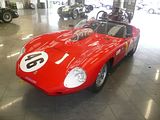
Lotus Type 15 and XI
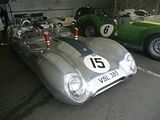

Willment Climax
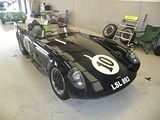
RAC TOURIST TROPHY FOR HISTORIC CARS (PRE ’63 GT)
Some of the most valuable cars of the whole event were entered in this class, but you would never have guessed it from the way that nothing was been spared as the cars were raced round the track. One of the great duels of the weekend was played out in tis race, as Ferrari versus Jaguar evoked Le Mans memories of yesteryear. Jackie Oliver – former winner of the classic 24-hour race – emerged with an early lead in the glorious yellow Ferrari 250 GT after a trio of cars ran three abreast on the opening tour. A rare mistake followed, however, as Oliver slid wildly across the line in a dramatic moment. The talented and extremely experienced pilot saved the car but lost three places in the interim, relinquishing the lead to the Jaguar E-type of James Cottingham. Oliver gradually made his way through the order before an intense battle ensued with Cottingham over several laps. The cars ran side-by-side for a number of corners, and even touched during the scrap, before Oliver retook top spot prior to the compulsory pit stops. Whilst the cars were evenly matched the race was effectively won when Cottingham had his own moment through the gravel after sliding on dropped oil through the Maggotts/Becketts complex. Oliver’s team-mate Gary Pearson had taken over driver duties by that point and scampered away to victory. The fight for the final podium place was no less dramatic as the AC Cobra of Martin Hunt and Blakeney-Edwards made a last lap pass by the Jon Minshaw E-type
AC Aceca
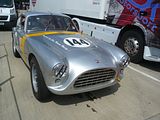
Alfa Romeos are popular in historic racing and there were lots of these to be seen in the pits. My favourite, by some margin, and also the most valuable (not that this seems to deter competitors on the track!) was this Giulietta SZ, a stunning car.
Aston Martin DB4
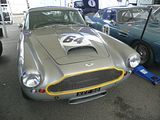
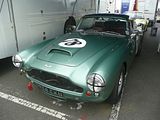
Ferrari 250GT
Ginetta G4
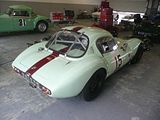
Lotus Elite
Turner Climax
PRE 1966 GT CARS
Always a popular series, this duo of race attracted some of the fastest machines of their day. With an incredibly varied grid of immaculate GT cars including Jaguars, Lotuses, Aston Martins, AC Cobras and many more, it was always going to be a test of both speed and endurance for cars and drivers as they battled on-track for position and tactically to time their mandatory pit-stops to perfection. In the first race, a fantastic solo drive from Sean McInerney allowed him to take victory in his TVR Griffith after an hour of blistering racing, whilst the pairing of Nathan and Laurence Kinch took second in an E Type Jaguar, though they were forced to up their pace in the last few laps as Matt Nicoll-Jones was clawing back time at an impressive rate in his E-type Jaguar. He didn’t quite have enough time to mount a charge, but comfortably secured third place. As ever, it was possible to get a close up inspection of the cars, and whilst I did not get to photograph them all, here are some highlights:
AC Shelby Daytona Coupe
AC Ace
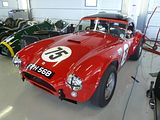
Some fabulous Aston Martins in this class included the long tail DB, DP214, dating from 1963.
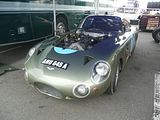
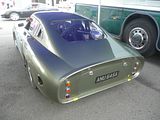
Austin Healey 3000
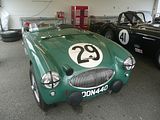
There were three Corvette powered vehicles on the grid for this race: two of them were Iso Grifo A3C competition cars, one of which was built as a street legal 1965 Bizzarini 5300 GT Strada, raced by New Zealander Roger Wills. The other was a 1965 Chevrolet Corvette Stingray.
Jaguar E Type
Porsche 911
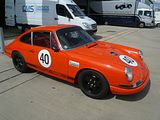
PETER ARUNDELL TROPHY FOR HISTORIC FORMULA JUNIOR
The racing action for the 2014 Silverstone Classic kicked off with a packed 52-car grid of Historic Formula Juniors. The pre-1964 feeder formula never fails to provide cracking racing, and the first contest of this record-breaking year delivered some incredible wheel-to-wheel action. From a standing start it was pole-sitter David Methley that led the way – his Brabham BT6 clearly strong in a straight line but a handful around Silverstone’s historic curves. He was soon being challenged for the lead by Sam Wilson, whose Lotus 22/20 went side-by-side with the Brabham for lap after scintillating lap, but a mistake while passing back markers spun Methley out of contention. Wilson then cruised to victory by 19 seconds ahead of Jonathan Milicevic and Michael Hibberd. Sam Wilson secured a stellar double in the Formula Junior contest with a win on the Sunday, although his task was made more comfortable when pole-sitter David Methley suffered a setback for the second consecutive day. Methley spun his Brabham BT6 out of contention while fighting Wilson for the lead in the race on Saturday, and on Sunday he bogged down off the line, losing nearly 20 places in the process. Meanwhile Jonathan Milicevic grabbed second after getting the better of Michael Hibberd’s Lotus 27 in an early battle, but all eyes were on Methley as he produced a determined comeback drive. Pass after eye-catching pass followed and he finally secured a podium that his undoubted pace deserved when he nipped by Hibberd late on.
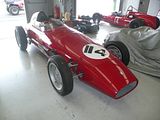
Cooper T56
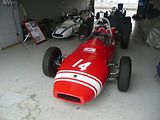
Elva 100
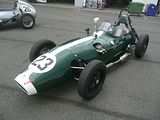
There were a number of classic Lotus cars, including the Type 18, the 1961 Lotus 20/22 and a 22
BRIAN HENTON TROPHY FOR FORMULA 3
Marking the golden anniversary of the modern era of Formula Three, the event included two showdowns dedicated to stunning cars from what’s widely regarded as F3’s most glorious generation. Formula 3 was introduced to replace Formula Junior in 1964 and by the 1970s and early 80s was the global proving ground of future World Champions. It was where legends such as Ayrton Senna, Nelson Piquet, Nigel Mansell, Alan Jones and Alain Prost all earned their fledging spurs en route to international stardom. Many of the actual cars raced by these idols were back in action at Silverstone as part of the biggest grid of classic F3 cars ever seen at the circuit. Notable cars among those entered were machines raced in period by rising F1 stars such as Gerhard Berger (two), Tony Brise, Rupert Keegan, Teo Fabi, Olivier Grouillard, Kenny Acheson, Larry Perkins, Andrea de Cesaris, Tommy Byrne and Derek Warwick. This class was first out of the grid on the Saturday, when Nick Padmore edged away in his March 783, pulling out a few tenths every lap to secure a comfortable victory ahead of Martin Stretton’s Martini MK39 and David Shaw’s March 803B. The battle of the race was, however between Simon Jackson and Jamie Brashaw. The two were locked in combat in their respective Chevron B43 and March 793 machines, eventually crossing the line separated by just 0.3s in fourth and fifth place. It was a similar story on Sunday, with another strong performance from Nick Padmore, who led from the off to eventually win by just over eight seconds. Martin Stretton and David Shaw comfortably secured the final two podium slots, but behind them there were some superb battles that went all the way to the flag. In particular the #30 Argo JM6 of Paul Dibden, #2 Martini MK39 of Eric Martin and #38 Chevron B38 of Hugh Price were tussling for a place in the top seven, all crossing the line within half a second of one-another in seventh, eighth and ninth respectively.
1971 Surtees TS9
50 YEARS OF FORMULA 1 at SILVERSTONE
With the 50th Grand Prix to be held at Silverstone – won by Britain’s Lewis Hamilton – taking place earlier in the month, and meaning that the circuit now joins the exclusive group of Monaco, Monza, Nürburgring and Spa-Francorchamps in having staged 50 Grands Prix, the organisers decided to put on a special display to mark this landmark. A celebratory cavalcade of 84 cars was staged on the Sunday at lunchtime, led by racing legend Stirling Moss OBE driving a glorious Maserati 250F from the fifties, and also featuring David Brabham, driving a 1967 Brabham BT24 in honour of his late father – Sir Jack Brabham – who passed away earlier this year. Quite a few of the other cars featured were also driven by Brabham. Although he is best known for competing in Coopers and, later, his own Brabhams, he did once race a Maserati 250F and that intriguingly was at Silverstone in 1956. Also taking part were a large number of the illustrious cars that were also competing at the Classic in the FIA Masters Historic Formula One Championship as well as cars from the two earlier grids organised by the Historic Grand Prix Cars Association. They were all joined by a significant number of additional Grand Prix cars that came to Silverstone especially to take part in the great parade. These included various ERAs, Coopers, Connaughts and the rare Pierce MG from the fifties, Lotuses and Brabhams from the sixties and more recent Hesketh and Ensigns from the DFV days. All the cars were on display throughout the three-day festival for fans to see up close.
This Talbot-Lago T26C was entered into the first Silverstone Grand Prix for Lord Selsdon
and the Cooper of inaugural BTCC champion Jack Sears who was back behind the wheel in 2014 more than 50 years after he first raced the car.
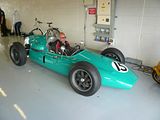
JACK BRABHAM MEMORIAL TROPHY FOR PRE ’66 GRAND PRIX CARS
The three-time Formula One World Champion, Jack Brabham, passed away in May aged 88 and is still the first – and only – man to win the ultimate F1 title driving one of his own cars. In total, the Australian legend – nicknamed ‘Black Jack’ – won 15 Grands Prix in an amazing career spanning from 1955 to 1970. Paying tribute to these outstanding achievements, the two races organised by the Historic Grand Prix Cars Association for rear-engined F1 cars that competed in 1965 or earlier were dedicated to Brabham, and were renamed the Jack Brabham Memorial Trophy for HGPCA Pre ’66 Grand Prix Cars, with prizes being presented by David Brabham, the youngest of Jack’s three sons, himself an ex F1 driver and Le Mans winner. In a fitting tribute to racing legend Sir Jack Brabham, the first of the two memorial races dedicated to his memory over the weekend saw the top two finishers in Brabham cars, and the trophy ceremony was emotionally presented by Jack’s son David. It was a win for Jason Minshaw from pole position in the Brabham BT4, which was pressured all the way by Jon Fairley in another Brabham – the BT11. Fairley came through from fourth on the grid, with a strong mid-race surge that saw him set several consecutive fastest laps. Minshaw responded in the final few laps to maintain the gap and cross the line in top spot. Speaking after the race, David Brabham said: “It’s brilliant to be here at Silverstone where my dad drove and won so often – and we got a one-two which makes it even better! Congratulations to all the drivers and thanks to everyone for their kind words today.” It was an interrupted second contest for the pre ’66 Grand Prix cars, as an accident early on brought out the red flags. At the restart, Jason Minshaw pulled away in his Brabham BT4. He was chased down for much of the race by another Brabham – this time a BT11 in the hands of Jon Fairley. When it looked as though Minshaw had things wrapped up he ran wide at Copse and almost lost the lead. Fairley closed to within a second, but didn’t have the pace to make a pass, eventually crossing the line 1.4s behind. The drive of the race, however, went to Miles Griffiths. Starting well down the order, he made up a wealth of places with some bold manoeuvres coming into the top five by mid-distance. He managed to make up two further places before the chequered flag came out to complete another sensational Silverstone Classic podium.
FIA MASTERS HISTORIC FORMULA ONE
The two FIA Masters grids starred a host of fabulous 3-litre machines, all in unforgettable period livery from what many still recall as being the sport’s true golden age. Among the interesting entries this year were the JPS Lotus 72 of Katsu Kabota, the orange March 240 6-wheeler of Jeremy Smith and Nathan Kinch in a 1985 Minardi, a car not seen in action for many years. Adding to the mix was modern-day sports car racer Stuart Hall who had entered in the McLaren M19A from the renowned RofGo collection – the Yardley-backed machine won the 1972 South African Grand Prix in Denny Hulme’s hands. In the first race, Ollie Hancock stormed to victory from seventh on the grid in an interrupted FIA Masters Historic Formula One race. An early spin for Andrew Haddon’s Williams was quickly followed by a huge accident for the Ensign N173 of Sidney Hoole, which brought out the red flags. The driver was taken to hospital with a leg injury although his condition wasn’t thought to be serious. Pole-sitter Michael Lyons streaked away at the restart and seemed certain for victory until his Hesketh endured last lap mechanical heartache. Hancock’s yellow Fittipaldi F5A inherited the victory but the young Englishman deserved his fortune after a stellar performance. His eye-catching charge through the order included passes on Martin Stretton’s Tyrell and Christophe D’Ansembourg’s Williams, both of which completed the podium positions. Just when we thought the racing at the 2014 Silverstone Classic couldn’t get any better, the FIA Masters Historic Formula One field stunned the huge Sunday crowds with one of the most intense battles the series has ever seen. In the opening laps the race one winning #55 Fittipaldi F5A of Ollie Hancock held station at the front of the pack as an out-of-position Michael Lyons carved through the order from 13th on the grid. Within a couple of laps Lyons’ Hesketh was with the leading group, as Hancock came under pressure from Martin Stretton in the Tyrrell 012 and the Arrows A4 of Steve Hartley. Lyons’ car then appeared to suffer some mechanical issues and he couldn’t make further progress, but ahead Hancock, Stretton, Hartley and the Williams of Christophe D’Ansembourg were trading places at almost every turn. Stretton managed to pull out a couple of seconds, and despite the best efforts of Hartley, who set the fastest lap in the final few minutes of the race, held on to take a stunning victory.
MASERATI CENTENARY TROPHY FOR HGPCA Pre ’61 GRAND PRIX CARS
In celebration of Maserati’s centenary, it was always likely that there would be record participation of historic racers from this Modenese marque, and indeed for the two HGPCA races for pre-1961 front-engined Grand Prix cars, a number of Maserati 250Fs – plus the unique 250F-based Tec Mec – all entered to line up on the same grid.
Hailed as one of the greatest grand prix cars ever created, the 250F was pivotal in Moss’ early F1 career. He raced one to his maiden Grand Prix podium at the superfast Spa-Francorchamps circuit in 1954, and in 1956 won at both Monaco and Monza when competing for the Maserati factory team. Moss retains massive affection for the 250F, and before the event was clearly enthusiastic about the chance to get behind the wheel of this car, when the 84 year old enthused: “It will be very, very special to lead both the wonderful parades in a 250F. The Maserati is probably the most beautiful looking and user-friendly Formula One car ever built; it’s delightful to drive and a real collector’s item. It was also very important to me. Not many people know this, but my father went to see Mercedes in 1953 to ask Alfred Neubauer [the team’s legendary F1 team manager] to give me a drive. He said that he’d been impressed by my driving in crappy cars but wanted to see me in something that could win. So we bought the Maserati. My first race was the Swiss Grand Prix at the tricky Bremgarten circuit and, in the wet, I put the Maserati on pole in front of [Juan-Manuel] Fangio, [Alberto] Ascari and all the Mercedes! As I said, it was a fantastic car to drive.” The Maserati 250F that Moss drove at this event was the chassis originally raced by Roy Salvadori back in the fifties and is one of just 26 ever produced. In total, the 250F won eight Grands Prix and was instrumental not only in establishing Moss as one of Britain’s top sporting stars but also in the great Fangio winning world championship titles in both 1954 and 1957.
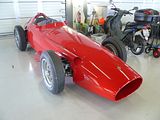
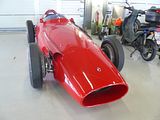
Other Maseratis competing in this class included the 300S, piloted by Dire Straits guitar legend, Mark Knopfler.
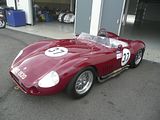
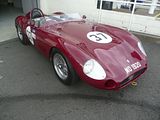
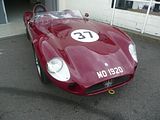
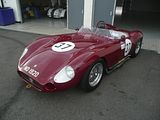

The Maseratis were not the only cars in the class, and they did not have it all their own way. Philip Walker claimed a double victory in his Lotus Type 16. In the first race, he claimed a fairly routine race win, leading from start-to-finish in his Lotus 16. Walker was kept honest by the Scarab Offenhauser of Julian Bronson in the early stages, but his challenge gradually faded and he had to settle for a lonely second place finish. Second row starter Tony Wood also maintained his position throughout the contest, completing the podium in the TecMec Maserati F415 ensuring the Italian marque was represented in the first of the event’s pair of Maserati Centenary Trophy races. A slow getaway meant that Walker had to work harder for his victory second time around, as Julian Bronson’s Scarab Offenhauser put up an impressive defensive display in the first part of the race. With the lead pair pulling out a sizable lead another duel developed behind, as the #35 Kurtis of Fred Harper went up against Tony Wood’s Maserati TecMec. Their battle was cut short as the Kurtis had an issue that dropped it down the order, handing Wood a comfortable podium at the flag. Just outside the podium spots in fourth was the incredible Ferrari 246 Dino – the last ever front-engined car to win a Grand Prix in the hands of Phil Hill at Monza back in 1960.
Connaught
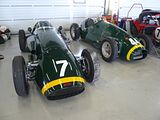
Cooper-Bristol Mk 2 4/53
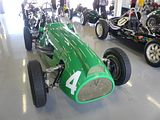
Osca Tipo G 4500

OTHER CARS
A number of road cars were also to be found in the Pits area.
Aston Martin DB5
E30 series BMW M3
Fiat 8v (Otto Vu)
This Ford GT was parked up next to one of the team race trailers.
A rather more utilitarian Ford was this Thames van. Based on the reverse angle rear windowed 105E Anglia, these were popular with small businesses and traders, and consequently had a hard life, meaning that most were scrapped a long time ago. Basic is almost an understatement!
This Mini Moke was being used as a more commodious and faster way of getting around the large Pit area than by bicycle or on foot.
Pausing for breath and the temptation of an ice cream, we spotted this Pagani Zonda manoeuvering into the car park just behind the pit area, so needless to say, we went over for a closer look. This would appear to be one of the relatively early models.
Someone clearly had a sense of humour, adapting this electric buggy to look like a Porsche 911.
WHAT ELSE?
Although the Classic is aimed at the motor enthusiast, there is plenty to keep everyone entertained for the weekend beyond looking at the Car Club displays, wandering around the Pits and watching the action on the track. Living up to its ‘Racing And Rocking’ motto, the Silverstone Classic always delivers some great live music. Canned Heat – one of the world’s foremost boogie rock groups from the Sixties – topped Friday evening’s bill while chart-topper Bonnie Tyler was Saturday’s headliner. Eagles and Aerosmith tribute bands pumped out crowd favourites and, fuelling the Mustang celebrations, soul band Signed, Sealed & Delivered sped through a host of memorable Motown singles.
On the Friday evening the BRDC had hosted an exclusive dinner to honour the astonishing and unique achievements of John Surtees OBE. It was exactly 50 years ago in 1964 that Surtees added the Formula One World Championship to his four 500cc motorcycle titles to become the first – and only – man to win World Championships on both two and four wheels. Marking that very special anniversary, Surtees was guest of honour at an event compered by Johnnie Walker MBE, the veteran radio disc jockey and broadcaster. Surtees has strong historic links with Silverstone. He remembers watching his father compete at the famous Northamptonshire venue soon after it opened back in the late forties and has himself raced countless cars and bikes at the circuit. Indeed, his first experience of F1 came at Silverstone, as did his first Grand Prix podium. “Formula One started for me at Silverstone when Colin Chapman – after I had tested his Lotus 18 there – said: ‘John drive for me when you are not racing your bikes’,” recalled Surtees – now 80. “It was then rather satisfying to get second place in the British Grand Prix with Colin in that first year of switching between two and four wheels in 1960. Obviously a lot has happened since then both in my career and that of Silverstone. The Formula One Grand Prix makes Silverstone the hub of motor sport in this country and none of this would have been possible without the ownership and development of the circuit by the BRDC.”
Those who have caught the classic car bug could attend one of Mike Brewer’s informative clinics on the Main Stage on Sunday where the well known motorhead and broadcaster offered advice on buying, restoring and owning heritage machinery. Further entertainments included the tyre-smoking Streetcar Shootouts, historic kart racing demos, aerial displays (this year naturally including two P51 Mustangs), the Tin Snail Challenge, rally and 4×4 rides in the off-road zone, helicopter flights, a ride on the BMW Wheel, the Gibson Guitar Experience plus the busy Shopping Village and even a chance to relax with a soothing massage. For younger visitors there were plenty of fun fair rides, ‘Rookie Ride’ two-wheel taster sessions and junior Whacky Wheelers.
A fleet of Citroen 2CV Dolly cars, all painted in red and white, and all with names beginning with the letter D had a dual role for the event: they were acting as a sort of taxi for competitors, and a number were also in use for a competition where a blindfolded driver was guided by a passenger perched so that they saw the obstacles through the open canvas roof. The cars all belong to a company called 2CV Adventures who will rent them out for organised tours.
If you’ve got to the end of this report and absorbed all of it, then you will have to agree that there is an awful lot that we managed to see in two very full days. Sadly, there was plenty that we simply did not have time to include. This is such a vast event, that you cannot possibly pack everything in. So, yes, when you first see the ticket prices, it may look pricey, but the early-bird booking discounts and the car club prices that I was able to secure made it the equivalent of £20 a day, at which price this is a veritable bargain. If you only attend one event in the year, I would say that this is the one you should put at the very top of your list, it really is that good. And with next year being the 25th anniversary of the event, I reckon you can bank on the organisers making it even more special.

